Inbox and Environment News: Issue 451
May 24 - 30, 2020: Issue 451
South West Lovett Bay Coastcare Group Secure Grant
Newly formed South West Lovett Bay Coastcare (SWLBC) has been successful in achieving support from Greater Sydney Local Land through funding from the NSW Government's Catchment Action program.
The grant of $20,000 is to support the rehabilitation of native vegetation on 11 ha of public and private lands leading to the iconic Linda Falls in Ku-ring-gai Chase National Park.
SWLB Coastcare has engaged a team from Dragonfly Environmental to undertake this funded stage of the project. Headed by Paul Webb the team will work together with the community over the next 18 months to bring the invasive weeds under control and the site into a maintenance phase.
Community involvement will include a number of “Bamboo Out'’ days, a weed workshops, plant ID workshop, and the development of a wildlife corridor along the waterfall track.
Lesley Stevens, Secretary of SWLB Coastcare, said “ It’s an ambitious community project, however, the involvement of all of the residents surrounding the infested area, and the practical support offered by Elvina Bay Bushcare, Rocky Point Bushcare, the West Pittwater Rural Fire Service, Northern Beaches Council and National Parks & Wildlife Service will give SWLB Coastcare every chance of a very successful outcome”.
West Pittwater Rural Fire Service has already done several site inspections with SWLB Coastcare. Andrew Cutler, Captain of the West Pittwater RFS said “ this is an important part of the RFS community strategy to encourage community resilience and readiness and at the same time preserve these special environments’
There is lot riding on this project. The pocket of littoral rainforest surrounding the Linda Falls in Lovett Bay is listed as an Ecological Endangered Community (EEC) - part of the remaining 1% of the littoral rainforest still found along the NSW coast. Further away from the Falls the rainforest is surrounded by a majestic Spotted Gum Forest which is also listed as an Ecological Endangered Community.
Paul Webb commented that it was a unique scenario. “ To have overwhelming support and involvement from all of the local community means that long after the funding has been spent the project will have a long term effect as maintenance work will be continued under the stewardship of the local residents”.
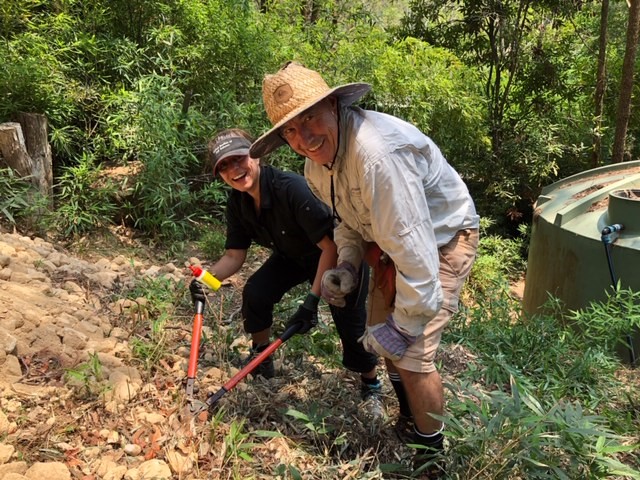
Background - December 2019: South West Lovett Bay Residents Form A Coastcare Group

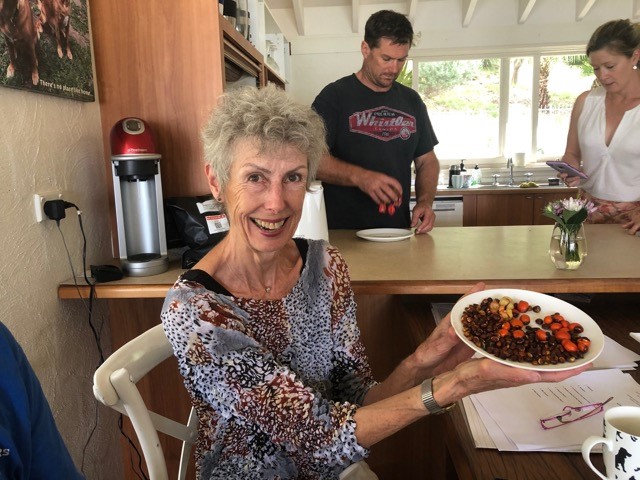
Musk Lorikeets Feeding In Pittwater
Musk Lorikeet (Glossopsitta concinna): pair, among a few Rainbow Lorikeets, Pittwater Online front yard - Pittwater Spotted Gum Flower Feast; May 17th, 2020 -10.30am to 11am.
Also seen: two juvenile White Bellied Sea Eagles winging overhead towards Careel Bay (didn't have camera out then).
The Musk Lorikeet is a medium-sized, sturdy lorikeet, sometimes seen in large flocks when trees are flowering and often in mixed flocks with other parrots and other birds. They are active and noisy. This lorikeet is mostly green, with a yellow patch at the side of the breast. It has a bright red forehead and band through the eye to the ear coverts. The crown is blue, with females having less blue than males. In flight, brown flight feathers and the golden tail are revealed. Flight is fast and direct, with short angular wings and a medium-length, pointed to wedge-shaped tail.
The Musk Lorikeet specialises in feeding on the nectar which is produced by flowering eucalypts, and sometimes also from the flowers of banksias and grevilleas. They collect nectar with their brush-shaped tongues. Lorikeets are usually seen feeding in large noisy flocks in the canopy of eucalypts, often associating with other nectar-feeding birds, especially Rainbow Lorikeets and honeyeaters. The movements of Musk Lorikeets are often correlated with the flowering of trees, with birds appearing when the trees are in bloom, and leaving after the flowering has finished.
Musk Lorikeets are endemic to (only found in) south-eastern Australia, being widespread in eastern New South Wales, all regions of Victoria and in the south-east of South Australia.
Musk Lorikeets breed in hollow branches and holes in living eucalypts, often near watercourses. The entrance holes are usually very small, so they have to squeeze in. Eggs are laid on a base of chewed or decayed wood. The female incubate the eggs and both parents roost in the hollow at night.
The musk lorikeet was first described by ornithologist George Shaw in 1790 as Psittacus concinnus, from a collection in the vicinity of Port Jackson in what is now Sydney. John Latham described it as Psittacus australis. Its specific epithet is the Latin concinna "elegant". They were/are also known by a Sydney indigenous term coolich.
Information - BirdLife Australia
Photos - A J Guesdon
Echidna Season
Echidna season has begun. As cooler days approach, our beautiful echidnas are more active during the days as they come out to forage for food and find a mate. This sadly results in a HIGH number of vehicle hits.
What to do if you find an Echidna on the road?
- Safely remove the Echidna off the road (providing its safe to do so).
- Call Sydney Wildlife or WIRES
- Search the surrounding area for a puggle (baby echidna). The impact from a vehicle incident can cause a puggle to roll long distances from mum, so please search for these babies, they can look like a pinky-grey clump of clay
What to do if you find an echidna in your yard?
- Leave the Echidna alone, remove the threat (usually a family pet) and let the Echidna move away in it's own time. It will move along when it doesn't feel threatened.
If you find an injured echidna or one in an undesirable location, please call Sydney Wildlife on 9413 4300 for advice.
www.sydneywildlife.org.au
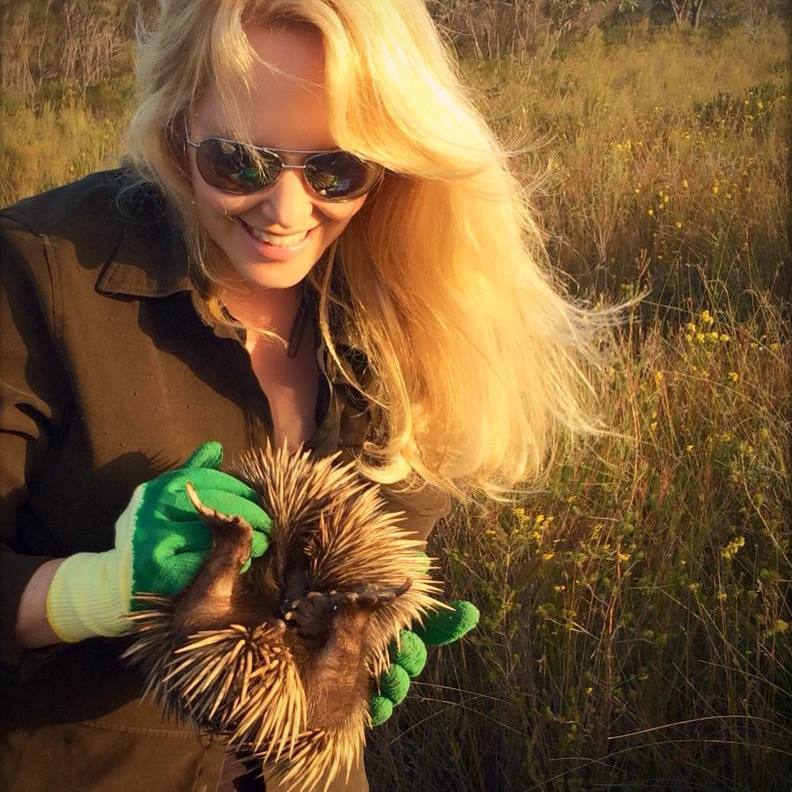
Lynleigh Greig, Sydney Wildlife, with a rescued echidna being returned to its home
Top Scientist’s Resignation Demands Snowy 2.0 Rethink
May 22, 2020
“The resignation of the Chair of the NSW Fisheries Scientific Committee, Associate Professor Mark Lintermans, puts a spotlight on the NSW Government’s refusal to take scientific advice about the environmental disaster that will unfold as a result of Snowy 2.0” stated Gary Dunnett, Executive Officer of the National Parks Association of NSW, and Andrew Cox, Chief Executive Officer of the Invasive Species Council this week.
Associate Professor Mark Lintermans resigned in protest as Chair of the NSW Fisheries Scientific Committee immediately after the NSW Government’s approval of the Snowy 2.0 Main Works EIS. Associate Professor Lintermans had served on the Committee for nine years.
“I cannot continue to serve a government that so wilfully ignores the destructive impacts of Snowy 2.0 on two threatened fish species, the Stocky Galaxias and Macquarie Perch,” Professor Lintermans said in a statement.
The NSW Government also signalled plans to grant an exemption to Snowy Hydro for the transfer of invasive species and diseases, prohibited under the NSW Biosecurity Act. “It is unprecedented for a government to grant an exemption that will likely cause the extinction in the wild of a species,” said Lintermans.
“Instead of adopting the universally accepted best-practice of preventing the transfer of invasive fish, Snowy Hydro are proposing second-rate alternatives to try and contain the invasive fish after transfer”.
Professor Lintermans has called for an independent review of the threats, mitigation measures, and long-term impacts.
“The spread of pest fish and diseases throughout the Snowy Mountains and its iconic rivers – Murrumbidgee, Snowy and Murray – is one of many tragic consequences of Snowy 2.0” Mr Cox said.
“The critically endangered stocky galaxias, already pushed towards extinction by trout stocking and thousands of feral horses, will be delivered its death blow by Snowy 2.0 through the deliberate spread of the predatory Climbing Galaxias and the deadly EHN virus.” Mr Cox continued.
“Yesterday’s decision will go down in history as one of the most reprehensible decisions of a NSW Government and will leave an appalling legacy on one of Australia’s most fragile and precious of natural icons, Kosciuszko National Park.” Mr Dunnett concluded.
Approval Of Snowy 2.0 EIS Sets Appalling Precedents States National Parks Association Of NSW
May 21, 2020
“Today’s approval of the Snowy 2.0 construction project in Kosciuszko National Park marks a new low in the NSW Government’s refusal to protect threatened species and natural landscapes” stated Gary Dunnett, Executive Officer of the National Parks Association of NSW.
“Approving a massive industrial construction in Kosciuszko National Park sets appalling environmental and legal precedents and reduces Australia from an international leader in national park management to the bottom of the pack.”
“Never before has a National Park been used as a dump for millions of tonnes of contaminated waste. Never before has approval been granted to spread pest fish and diseases across the Snowy Mountains and headwaters of the Murray, Snowy and Murrumbidgee river systems. Never before has a development been allowed to drive a critically-endangered species, the Stocky Galaxias, into extinction. Never before has approval been granted to raze hundreds of hectares of threatened species habitat and native vegetation in a National Park. Never before has approval been given for a project that will result in infrastructure and landscape scars over 35 kilometres of a National Park.”
Mr Dunnett added, “The approval flies in the face of the fundamental principles of environmental planning, particularly the need to consider feasible alternatives and assess the cumulative impacts of all stages of a development. This approval has been issued before the EIS for the transmission lines that will be bulldozed through the Park has even been exhibited.”
“The NSW Government ignored the 50 energy, engineering, economic and environmental experts and organisations whose analysis utterly discredited the claimed benefits of Snowy 2.0. Their Open Letter to the NSW Premier and Prime Minister states “It is now evident that Snowy 2.0 will cost many times its initial estimate, not deliver its claimed benefits and permanently damage Kosciuszko National Park to an unprecedented extent. Snowy 2.0 is not as it has been publicly portrayed. There are many alternatives that are more efficient, cheaper, quicker to construct, and incur less emissions and environmental impacts.”
“The NSW Government has ignored the expert’s advice and urging for an independent review of Snowy Hydro’s misleading claims for the project. Today’s decision will go down in history as an appalling assault on one of Australia’s most fragile and precious of natural icons, Kosciuszko National Park.”
Snowy 2.0 Letter to Ministers Stokes and Kean - April 6, 2020
Snowy 2.0 Open Letter to PM and Premier - March 24, 2020
Snowy 2.0 Approved: Multi-Billion Dollar Boost For Regional NSW
May 21, 2020: NSW Department of Planning, Industry and Environment
Up to 2,000 new jobs will be created and $4.6 billion will be injected into regional NSW with Australia’s biggest energy storage project getting the go-ahead today from the NSW Government.
Deputy Premier and Member for Monaro John Barilaro said planning approval for the Snowy 2.0 Main Works would mean new jobs, big investment and big infrastructure for regional NSW.
“Snowy Hydro is an icon of our community, with Snowy 2.0 already employing about 500 people, directly injecting more than $35 million into the Snowy Mountains and involving more than 100 local businesses,” Mr Barilaro said.
“This latest approval will see the creation of an extra 2,000 jobs during the construction phase, unlock billions of investment in regional NSW and allow the next stage of construction to further progress this legacy project.”
The project involves the construction of a pumped-hydro power station that sits about 800 metres underground and is about 240 metres long – the equivalent of two football fields.
It also includes the construction of 27 kilometres of tunnels between the Talbingo and Tantangara Reservoirs, lined with 130,500 concrete segments manufactured locally in Polo Flat.
Once complete, the project will add 350 gigawatt hours of energy storage and 2,000 megawatts of generation capacity to the State’s grid – enough to power 500,000 homes during peak demand – and play a major role in the National Electricity Market (NEM) by facilitating the development of renewable energy and putting downward pressure on electricity prices.
Planning and Public Spaces Minister Rob Stokes said the project’s approval includes strict conditions to minimise and offset environmental impacts.
“In March we approved the Snowy 2.0 Segment Factory, and this month we have approved the Snowy 2.0 Main Works, enabling the creation of new jobs and the flow of substantial investment into our State,” Mr Stokes said.
“The projects approval also requires Snowy Hydro to invest almost $100 million for biodiversity and environmental offsets to protect threatened species and deliver long-term conservation and recreational benefits for the Kosciuszko National Park.”
Snowy Hydro’s CEO, Paul Broad, said that today’s announcement is another major milestone for Snowy 2.0 which is progressing full steam ahead, creating more jobs and significant investment in regional communities.
“Snowy Hydro has been operating responsibly in Kosciuszko National Park for almost 70 years,” Mr Broad said.
“For a small and temporary construction footprint covering just 0.10% of the park, we will deliver 2,000MW of large-scale energy storage to support many other wind and solar projects coming online.”
As part of the approval, the proponent will be required to invest $5 million to develop a captive breeding program for the threatened Stocky Galaxias and Macquarie Perch, install fish-screens to minimise the risk of transfer of pest species downstream, develop an app to share information gathered for the project with visitors of the national park, and restore native vegetation and threatened species habitat once construction infrastructure is decommissioned.
While Exploratory Works continue to progress on site, the project will now be referred to the Federal Government for final approval before Main Works construction commences in the coming months.
Snowy Water Licence Amendments Open For Public Exhibition
May 20, 2020
The NSW Government is encouraging the public to have their say on proposed amendments to the Snowy Water Licence with the public exhibition now open.
The amendments were identified during the Snowy Water Licence mandatory 10-year review under the Act governing Snowy Hydro’s operations, Allan Raine, Acting Director, Water Planning Implementation, Department of Planning, Industry and Environment-Water said.
“The review commenced in 2018 and included a public consultation period which attracted 40 submissions, resulting in 23 actions for implementation. This included 10 administrative amendments to the licence.
“The amendments aim to improve oversight of Snowy Hydro’s operations, improve the coordination of environmental water management, increase transparency, simplify provisions, secure current practice and fix known errors,” he said.
“The public’s involvement in the initial review has led to these proposed amendments, now I’m encouraging the public to review these amendments online and make submissions if they feel they’re required.
“The Snowy Water Licence outlines Snowy Hydro’s rights and obligations managing water on behalf of the community. It’s our water, so I’m encouraging the community to have their say in ensuring we get the best results from this ‘once-in-a-decade’ review process,” Mr Raine said.
For further information on the proposed amendments and to make a submission, visit Snowy Water Licence
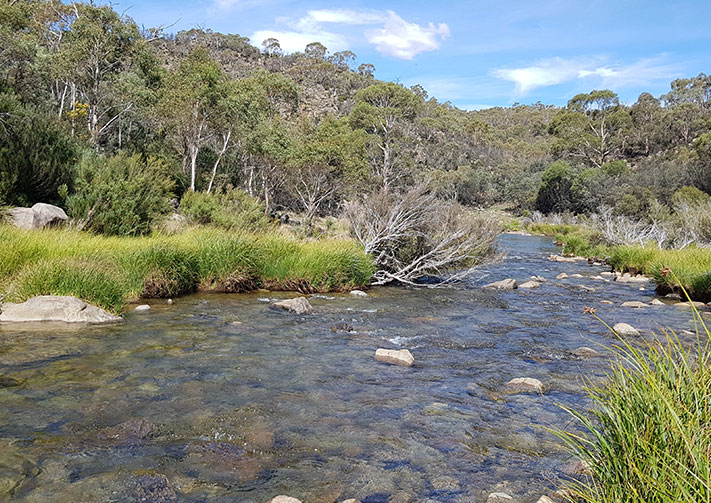
NSW Has Approved Snowy 2.0. Here Are Six Reasons Why That’s A Bad Move
May 21, 2020
by Bruce Mountain, Director, Victoria Energy Policy Centre, Victoria University
Mark Lintermans, Associate professor, University of Canberra
The controversial Snowy 2.0 project has mounted a major hurdle after the New South Wales government today announced approval for its main works.
The pumped hydro venture in southern NSW will pump water uphill into dams and release it when electricity demand is high. The federal government says it will act as a giant battery, backing up intermittent energy from by wind and solar.
We and others have criticised the project on several grounds. Here are six reasons we think Snowy 2.0 should be shelved.
1. It’s really expensive
The federal government announced the Snowy 2.0 project without a market assessment, cost-benefit analysis or indeed even a feasibility study.
When former Prime Minister Malcolm Turnbull unveiled the Snowy expansion in March 2017, he said it would cost A$2 billion and be commissioned by 2021. This was revised upwards several times and in April last year, Snowy Hydro awarded a A$5.1 billion contract for partial construction.
Snowy Hydro has not costed the transmission upgrades on which the project depends. TransGrid, owner of the grid in NSW, has identified options including extensions to Sydney with indicative costs up to A$1.9 billion. Massive extensions south, to Melbourne, will also be required but this has not been costed.
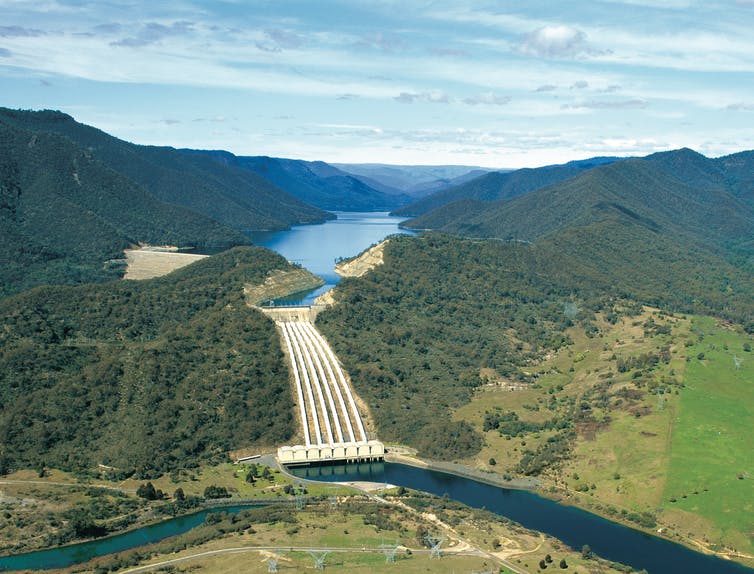
The Tumut 3 scheme, with which Snowy 2.0 will share a dam. Snowy Hydro Ltd
2. It will increase greenhouse gas emissions
Both Snowy Hydro Ltd and its owner, the federal government, say the project will help expand renewable electricity generation. But it won’t work that way. For at least the next couple of decades, analysis suggests Snowy 2.0 will store coal-fired electricity, not renewable electricity.
Snowy Hydro says it will pump the water when a lot of wind and solar energy is being produced (and therefore when wholesale electricity prices are low).
But wind and solar farms produce electricity whenever the resource is available. This will happen irrespective of whether Snowy 2.0 is producing or consuming energy.
When Snowy 2.0 pumps water uphill to its upper reservoir, it adds to demand on the electricity system. For the next couple of decades at least, coal-fired electricity generators – the next cheapest form of electricity after renewables – will provide Snowy 2.0’s power. Snowy Hydro has denied these claims.
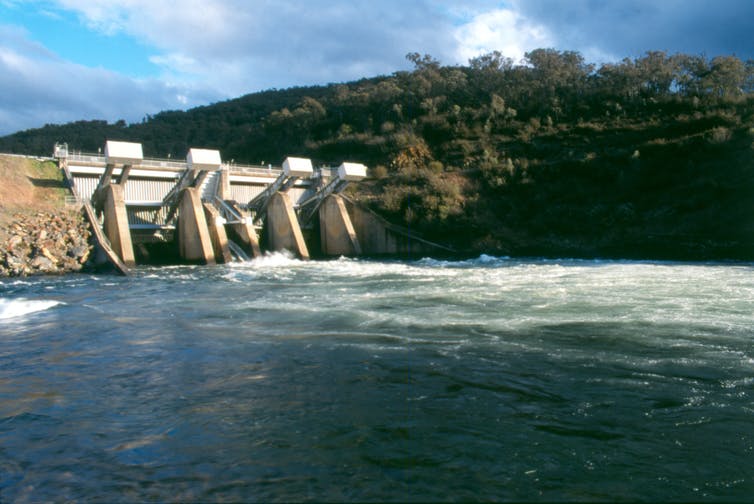
Khancoban Dam, part of the soon-to-be expanded Snowy Hydro scheme. Snowy Hydro Ltd
3. It will deliver a fraction of the energy benefits promised
Snowy 2.0 is supposed to store renewable energy for when it is needed. Snowy Hydro says the project could generate electricity at its full 2,000 megawatt capacity for 175 hours – or about a week.
But the maximum additional pumped hydro capacity Snowy 2.0 can create, in theory, is less than half this. The reasons are technical, and you can read more here.
It comes down to a) the amount of time and electricity required to replenish the dam at the top of the system, and b) the fact that for Snowy 2.0 to operate at full capacity, dams used by the existing hydro project will have to be emptied. This will result in “lost” water and by extension, lost electricity production.
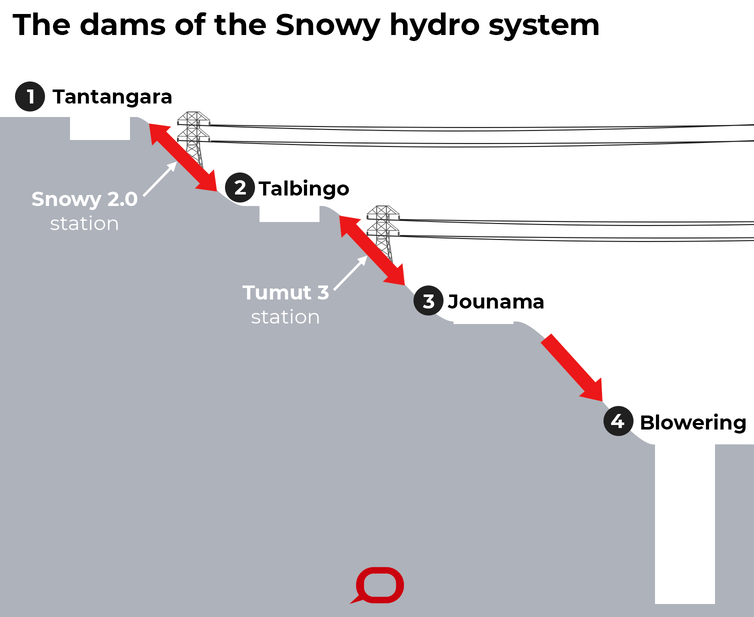
The Conversation, CC BY-ND
4. Native fish may be pushed to extinction
Snowy 2.0 involves building a giant tunnel to connect two water storages – the Tantangara and Talbingo reservoirs. By extension, the project will also connect the rivers and creeks connected to these reservoirs.
A small, critically endangered native fish, the stocky galaxias, lives in a creek upstream of Tantangara. This is the last known population of the species.
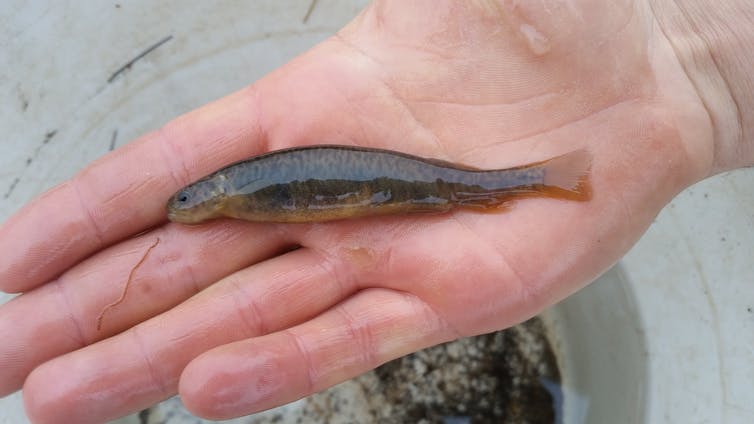
The stocky galaxias. Hugh Allan
An invasive native fish, the climbing galaxias, lives in the Talbingo reservoir. Water pumped from Talbingo will likely transfer this fish to Tantangara.
From here, the climbing galaxias’ capacity to climb wet vertical surfaces would enable it to reach upstream creeks and compete for food with, and prey on, stocky galaxias – probably pushing it into extinction.
Snowy 2.0 is also likely to spread two other problematic species – redfin perch and eastern gambusia – through the headwaters of the Murrumbidgee, Snowy and Murray rivers.
5. It’s a pollution risk
Snowy Hydro says its environmental impact statement addresses fish transfer impacts, and potentially serious water quality issues.
Four million tonnes of rock excavated to build Snowy 2.0 would be dumped into the two reservoirs. The rock will contain potential acid-forming minerals and other harmful substances, which threaten to pollute water storages and rivers downstream.
When the first stage of the Snowy Hydro project was built, comparable rocks were dumped in the Tooma River catchment. Research in 2006 suggested the dump was associated with eradication of almost all fish from the Tooma River downstream after rainfall.
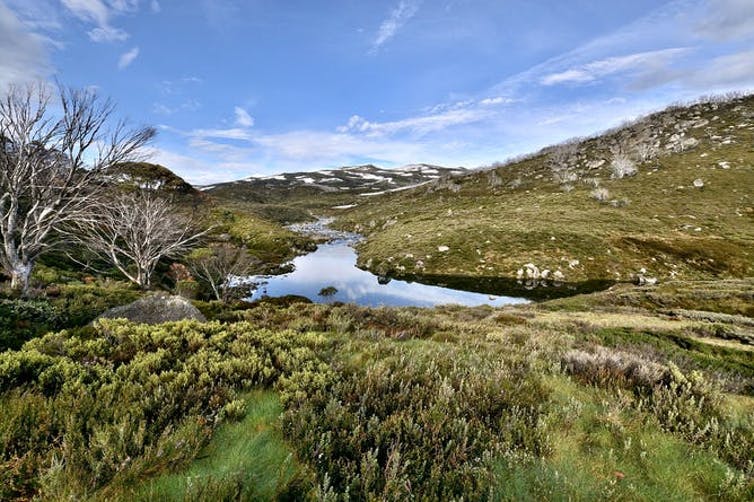
Snowy 2.0 threatens to pollute pristine Snowy Mountains rivers. Schopier/Wikimedia
6. Other options were not explored
Many competing alternatives can provide storage far more flexibly for a fraction of Snowy 2.0’s price tag. These alternatives would also have far fewer environmental impacts or development risks, in most cases none of the transmission costs and all could be built much more quickly.
Expert analysis in 2017 identified 22,000 potential pumped hydro energy storage sites across Australia.
Other alternatives include chemical batteries, encouraging demand to follow supply, gas or diesel generators, and re-orienting more solar capacity to capture the sun from the east or west, not just mainly the north.
Where to now?
The federal government, which owns Snowy Hydro, is yet to approve the main works.
Given the many objections to the project and how much has changed since it was proposed, we strongly believe it should be put on hold, and scrutinised by independent experts. There’s too much at stake to get this wrong.
This article was published first in The Conversation, republished under a Creative Commons licence, click here to read the original.
Rock Wallaby Colony Survives In Kangaroo Valley
May 17, 2020
The entire colony of brush-tailed rock-wallabies in Kangaroo Valley survived the 2019-20 bushfires which devastated the region, with the support of emergency food drops, announced Environment Minister Matt Kean today.
The life-saving food included carrots and sweet potatoes, as part of the Saving our Species (SoS) program to help this significant colony of a native species.
“After the ferocious fires, it was a welcome relief to hear monitoring cameras and the GPS collars confirmed all the wallabies survived the blaze after trapping several wallabies to assess their health and remove GPS tracking collars,” Mr Kean said.
“It was great to hear the wallabies were in good health, with one wallaby identified as a joey that was not previously known.
“This level of intervention is vital to help maintain these colonies and allow them to recover. At this stage feeding is expected to continue until natural food resources and water become available in the landscape during post fire recovery,” Mr Kean said.
Member for Kiama Gareth Ward welcomed the announcement by Minister Kean.
“I am thrilled to hear rock-wallabies are in good health thanks to the emergency food drops and incredible work by NPWS rangers across our region.”
Thousands of kilograms of carrots and sweet potatoes were delivered to wallabies in the Capertee and Wolgan region, Yengo National Park, Kangaroo Valley, Jenolan and Oxley Wild Rivers National Park, in the immediate aftermath of the bushfires helping to ensure the survival of the endangered iconic species.
The NSW Government’s Saving our Species program aims to secure the future of threatened plants and animals, such as the brush-tailed rock-wallaby in the wild.
Wildfires Increasing In Size And Frequency Across Victoria
May 18, 2020
A new study by researchers at The Australian National University (ANU) has shown for the first time the full extent of the areas burned by Victorian bushfires over the past two decades.
Co-author Professor David Lindenmayer says the results indicate a major overhaul is needed when it comes to fire and land management.
The study maps where wildfires took place across Victoria between 1995, the start of the millennium drought, and 2020.
"This is the first time we've seen the full spatial extent of bushfires dating back 25 years," Professor Lindenmayer said.
"What we found is the state is burning more and more. Prior to 2000 we had one mega-fire in Victoria in 150 years of records. Since 2000 we've already had three.
"We can also see the extensive and frequent re-burning of previously fire-damaged areas -- sometimes with a gap as short as five or six years.?
"These results make a compelling case for a major policy shake-up, with the aim of reducing mega-fires, protecting unburnt areas and managing repeatedly damaged ecosystems."
In the 2019-2020 season alone, wildfires burned approximately 1.5 million hectares in Victoria -- roughly double the size of the entire Melbourne metropolitan area.
"This is the largest area impacted by wildfires in Victoria since 1939, when 3.4 million hectares burned," Professor Lindenmayer said.
"Of the 1.5 million hectares burned during the 2019-2020 fire season, more than 600,000 hectares have burned twice, and more than 112,000 hectares have burned three times over the past 25 years."
Professor Lindenmayer says if we don't make changes to fire, resource and conservation policies, vital ecosystems and livelihoods will be at risk.
"We can no long look at bushfires as unexpected out of the blue events. The data tells us they're only becoming more frequent," he said.
"This impairs the ability of the ecosystem to recover. This includes areas that provide people with access to water, as well as vital habitats and protected areas like state forests.
"Our analysis shows wildfires have had a pronounced impact on particular ecosystem types, areas of high conservation value, and the use of resources for industry. These findings, in turn, underscore an urgent need for new policies and approaches to land management.
Major wildfire events like the most recent summer bushfires also have a huge impact on timber production, with extensive amounts of timber resources burned in areas like East Gippsland.
Two-thirds of the area that was planned for logging in East Gippsland in the next five years was burned -- this is 30 per cent of everything targeted for logging in Victoria by 2025.
"Proposals to shift logging into unburnt areas are unacceptable -- those unburnt areas are too important for conversing biodiversity," Professor Lindenmayer said.
"In highly fire-prone areas like Victoria's native forests, there's an urgent need to shift wood production into geographically dispersed tree plantations.
"The large amount of native forest in Victoria dedicated to logging that is now burned means that native forest-dependent logging industries will no longer economically and ecologically tenable."
While the study focused on Victoria, the researchers say their findings could apply to other areas in Australia and overseas which are under threat from widespread, recurring bushfires.
David B. Lindenmayer and Chris Taylor. New spatial analyses of Australian wildfires highlight the need for new fire, resource, and conservation policies. PNAS, 2020 DOI: 10.1073/pnas.2002269117
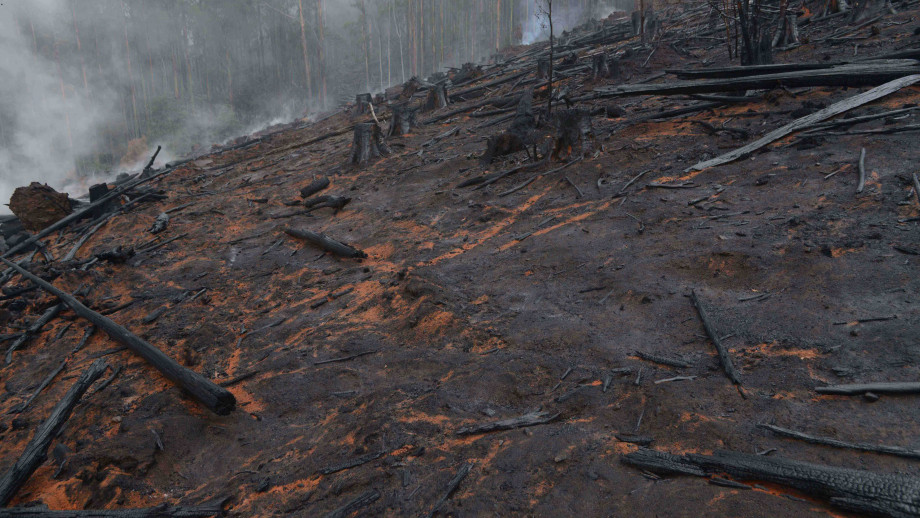
Coupe burn smouldering - photo by Dave Blair
Fish Faeces Reveals Which Species Eat Crown-Of-Thorns
May 18, 2020
Crown-of-thorns starfish are on the menu for many more fish species than previously suspected, an investigation using fish poo and gut goo reveals. The finding suggests that some fish, including popular eating and aquarium species, might have a role to play in keeping the destructive pest population under control.
The native starfish (Acanthaster solaris) is responsible for widespread damage to the Great Barrier Reef. Since 1962 its population has surged to plague proportions on three occasions, each time causing the loss of large amounts of hard coral. A fourth outbreak is currently underway.
Increasing the amount of predation on starfish has long been touted as a potential solution to preventing outbreaks. However, aside from a mollusc called the Giant Triton (Charonia tritonis), identifying what eats it has been a challenging task.
Now, a team of scientists led by Dr Frederieke Kroon from the Australian Institute of Marine Science in Townsville, Australia, has applied a genetic marker unique for crown-of-thorns, developed at AIMS, to detect the presence of starfish DNA in fish poo and gut contents.
Over three years, Dr Kroon's team used it on samples taken from 678 fish from 101 species, comprising 21 families, gathered from reefs experiencing varying levels of starfish outbreak.
"Our results strongly indicate that direct fish predation on crown-of-thorns may well be more common than is currently appreciated," said Dr Kroon.
The study, published in the journal Scientific Reports, confirms that at least 18 coral reef fish species -- including Spangled Emperor (Lethrinus nebulosus), Redthroat Emperor (Lethrinus miniatus) and Blackspotted Puffer (Arothron nigropunctatus) -- consume young or adult starfish on the reef.
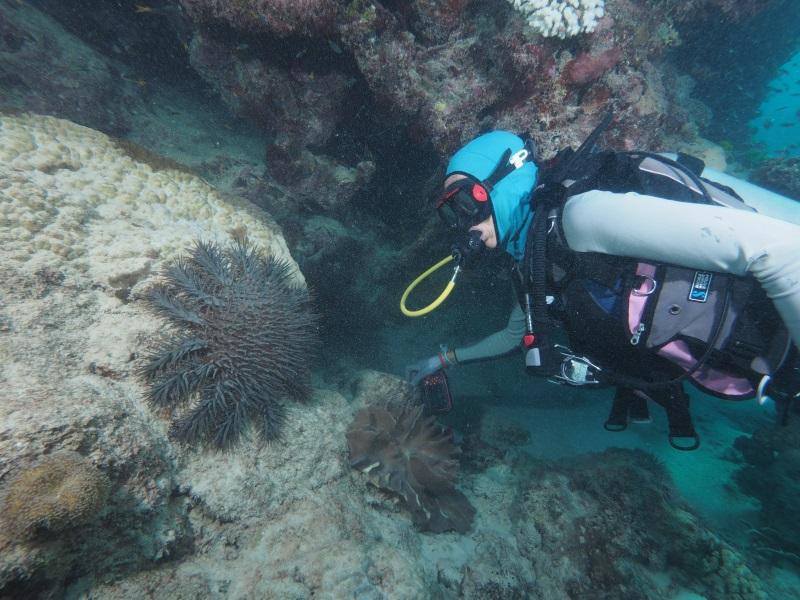
Dr Frederieke Kroon looking at a crown-of-thorns starfish on the Great Barrier Reef. Credit: D.Westcott/CSIRO
Among the species were nine which had not been previously reported to feed on crown-of-thorns. These include the Neon Damsel (Pomacentrus coelistis), Redspot Emperor (Lethrinus lentjan), and the Blackspot Snapper (Lutjanus fulviflama).
"Our findings might also solve a mystery -- why reef areas that are closed to commercial and recreational fishing tend to have fewer starfish than areas where fishing is allowed," said Dr Kroon.
She and colleagues from AIMS worked with researchers from CSIRO Land and Water and managers from the Great Barrier Reef Marine Park Authority to conduct the study.
"This innovative research sheds new light on the extent that coral reef fishes eat crown-of-thorns starfish," said Mr Darren Cameron, co-author of the paper, and Director of the COTS Control Program at the Great Barrier Reef Marine Park Authority.
"A number of the fish species shown to feed on these starfish are caught by commercial and recreational fisheries, highlighting the importance of marine park zoning and effective fisheries management in controlling crown-of-thorns starfish across the Great Barrier Reef."
Frederieke J. Kroon, Carine D. Lefèvre, Jason R. Doyle, Frances Patel, Grant Milton, Andrea Severati, Matt Kenway, Charlotte L. Johansson, Simon Schnebert, Peter Thomas-Hall, Mary C. Bonin, Darren S. Cameron, David A. Westcott. DNA-based identification of predators of the corallivorous Crown-of-Thorns Starfish (Acanthaster cf. solaris) from fish faeces and gut contents. Scientific Reports, 2020; 10 (1) DOI: 10.1038/s41598-020-65136-4
Birding At Home In Pittwater
Thank you to everyone for staying at home as much as possible to stop the spread of the virus and save lives. We know self-isolation can be challenging and stressful at times so what we need right now is nature.
We can be so grateful that no matter where you live, you can still see birds and take comfort from them.
Please visit their new Birding at Home page to find out how you and your household can continue to enjoy the beauty of our feathered friends.
You'll find activities to occupy kids while our movements are restricted, links to our Autumn Birds in Backyards survey and Bird Finder, and information on how you can act to protect birds forever.
To help everyone who is now Birding at Home, they are also kicking off a regular live series on Facebook where our bird experts will be taking questions and talking about what we love best - birds.
Even if you are an expert birder, we encourage you to join in for a chat – and please spread the word to all the bird and nature lovers in your life.
P.S. They'll be having new bird experts every week to talk about a new topic, including Amanda Lilleyman in the NT on shorebirds and Holly Parsons to talk about bird friendly gardens. Make sure you have liked them on Facebook to get notifications and join in the talks.
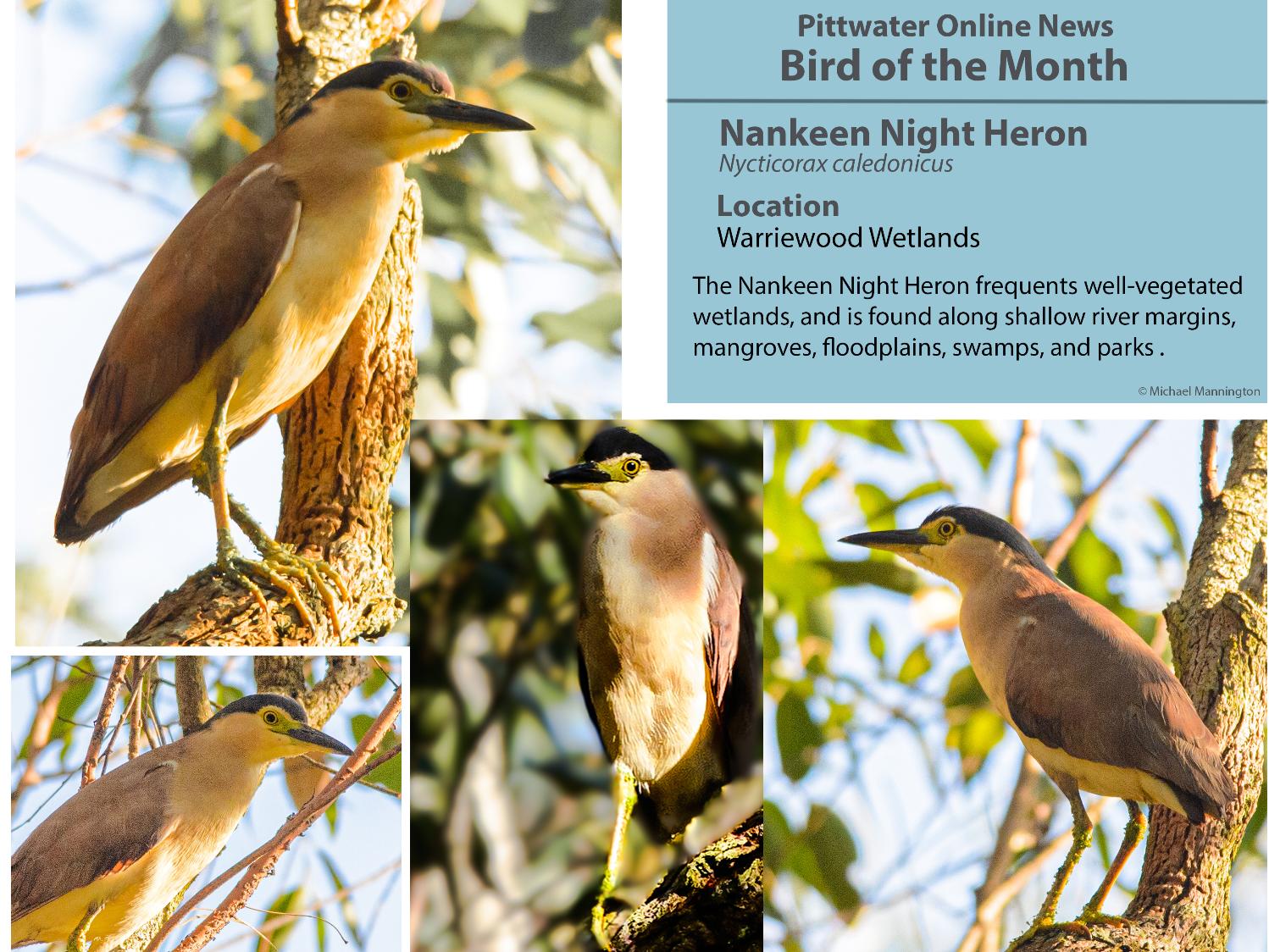
 New Shorebird Identification Booklet
New Shorebird Identification Booklet
The Migratory Shorebird Program has just released the third edition of its hugely popular Shorebird Identification Booklet. The team has thoroughly revised and updated this pocket-sized companion for all shorebird counters and interested birders, with lots of useful information on our most common shorebirds, key identification features, sighting distribution maps and short articles on some of BirdLife’s shorebird activities.
The booklet can be downloaded here in PDF file format: http://www.birdlife.org.au/documents/Shorebird_ID_Booklet_V3.pdf
Paper copies can be ordered as well, see http://www.birdlife.org.au/projects/shorebirds-2020/counter-resources for details.
Download BirdLife Australia's children’s education kit to help them learn more about our wading birdlife
Shorebirds are a group of wading birds that can be found feeding on swamps, tidal mudflats, estuaries, beaches and open country. For many people, shorebirds are just those brown birds feeding a long way out on the mud but they are actually a remarkably diverse collection of birds including stilts, sandpipers, snipe, curlews, godwits, plovers and oystercatchers. Each species is superbly adapted to suit its preferred habitat. The Red-necked Stint is as small as a sparrow, with relatively short legs and bill that it pecks food from the surface of the mud with, whereas the Eastern Curlew is over two feet long with a exceptionally long legs and a massively curved beak that it thrusts deep down into the mud to pull out crabs, worms and other creatures hidden below the surface.
Some shorebirds are fairly drab in plumage, especially when they are visiting Australia in their non-breeding season, but when they migrate to their Arctic nesting grounds, they develop a vibrant flush of bright colours to attract a mate. We have 37 types of shorebirds that annually migrate to Australia on some of the most lengthy and arduous journeys in the animal kingdom, but there are also 18 shorebirds that call Australia home all year round.
What all our shorebirds have in common—be they large or small, seasoned traveller or homebody, brightly coloured or in muted tones—is that each species needs adequate safe areas where they can successfully feed and breed.
The National Shorebird Monitoring Program is managed and supported by BirdLife Australia.
This project is supported by Glenelg Hopkins Catchment Management Authority and Hunter Local Land Services through funding from the Australian Government’s National Landcare Program. Funding from Helen Macpherson Smith Trust and Port Phillip Bay Fund is acknowledged.
The National Shorebird Monitoring Program is made possible with the help of over 1,600 volunteers working in coastal and inland habitats all over Australia.
The National Shorebird Monitoring program (started as the Shorebirds 2020 project initiated to re-invigorate monitoring around Australia) is raising awareness of how incredible shorebirds are, and actively engaging the community to participate in gathering information needed to conserve shorebirds.
In the short term, the destruction of tidal ecosystems will need to be stopped, and our program is designed to strengthen the case for protecting these important habitats.
In the long term, there will be a need to mitigate against the likely effects of climate change on a species that travels across the entire range of latitudes where impacts are likely.
The identification and protection of critical areas for shorebirds will need to continue in order to guard against the potential threats associated with habitats in close proximity to nearly half the human population.
Here in Australia, the place where these birds grow up and spend most of their lives, continued monitoring is necessary to inform the best management practice to maintain shorebird populations.
BirdLife Australia believe that we can help secure a brighter future for these remarkable birds by educating stakeholders, gathering information on how and why shorebird populations are changing, and working to grow the community of people who care about shorebirds.
To find out more visit: http://www.birdlife.org.au/projects/shorebirds-2020/shorebirds-2020-program
Weed Cassia Now Flowering: Please Pull Out And Save Our Bush
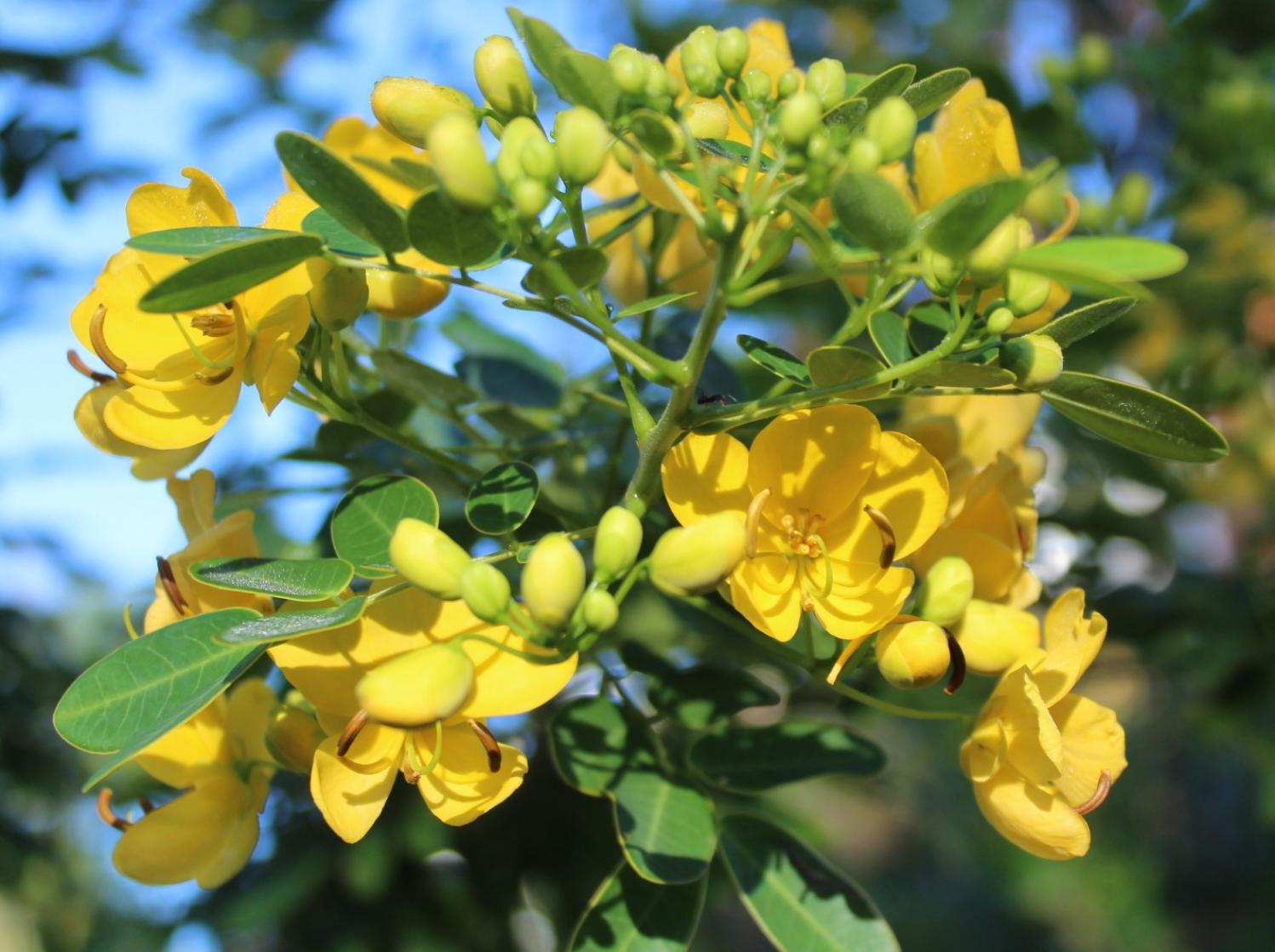
Please Help Sydney Wildlife Rescue: Donate Your Cans And Bottles And Nominate SW As Recipient
You can Help Sydney Wildlife help Wildlife. Sydney Wildlife Rescue is now listed as a charity partner on the return and earn machines in these locations:
- Pittwater RSL Mona Vale
- Northern Beaches Indoor Sports Centre NBISC Warriewood
- Woolworths Balgowlah
- Belrose Super centre
- Coles Manly Vale
- Westfield Warringah Mall
- Strathfield Council Carpark
- Paddy's Markets Flemington Homebush West
- Woolworths Homebush West
- Caltex Concord road Concord West
- Bondi Campbell pde behind Beach Pavilion
- Westfield Bondi Junction car park level 2 eastern end Woolworths side under ramp
- UNSW Kensington
- Enviro Pak McEvoy street Alexandria.
Every bottle, can, or eligible container that is returned could be 10c donated to Sydney Wildlife.
Every item returned will make a difference by removing these items from landfill and raising funds for our 100% volunteer wildlife carers. All funds raised go to support wildlife.
It is easy to DONATE, just feed the items into the machine select DONATE and choose Sydney Wildlife Rescue.
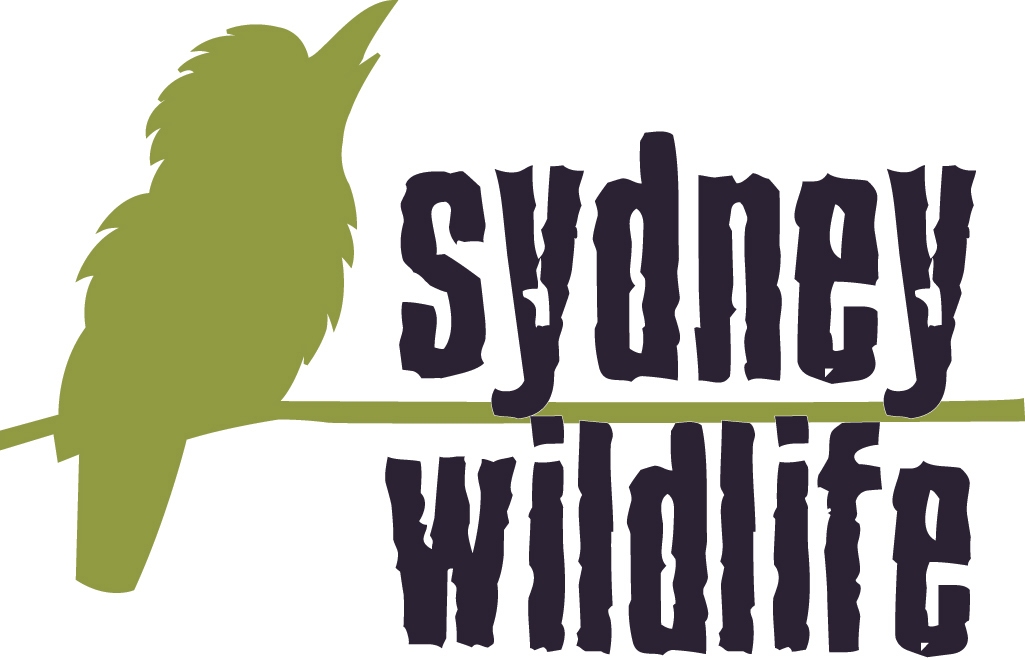
Bushcare In Pittwater
Where we work Which day What time
Avalon
Angophora Reserve 3rd Sunday 8:30 - 11:30am
Avalon Dunes 1st Sunday 8:30 - 11:30am
Avalon Golf Course 2nd Wednesday 3 - 5:30pm
Careel Creek 4th Saturday 8:30 - 11:30am
Toongari Reserve 3rd Saturday 9 - 12noon (8 - 11am in summer)
Bangalley Headland 2nd Sunday 9 to 12noon
Bayview
Winnererremy Bay 4th Sunday 9 to 12noon
Bilgola
North Bilgola Beach 3rd Monday 9 - 12noon
Algona Reserve 1st Saturday 9 - 12noon
Plateau Park 1st Friday 8:30 - 11:30am
Church Point
Browns Bay Reserve 1st Tuesday 9 - 12noon
McCarrs Creek Reserve Contact Bushcare Officer To be confirmed
Clareville
Old Wharf Reserve 3rd Saturday 8 - 11am
Elanora
Kundibah Reserve 4th Sunday 8:30 - 11:30am
 Mona Vale
Mona Vale Mona Vale Beach Basin 1st Saturday 8 - 11am
Mona Vale Dunes 2nd Saturday +3rd Thursday 8:30 - 11:30am
Newport
Bungan Beach 4th Sunday 9 - 12noon
Crescent Reserve 3rd Sunday 9 - 12noon
North Newport Beach 4th Saturday 8:30 - 11:30am
Porter Reserve 2nd Saturday 8 - 11am
North Narrabeen
Irrawong Reserve 2nd Saturday 2 - 5pm
Palm Beach
North Palm Beach Dunes 3rd Saturday 9 - 12noon
Scotland Island
Catherine Park 2nd Sunday 10 - 12:30pm
Elizabeth Park 1st Saturday 9 - 12noon
Pathilda Reserve 3rd Saturday 9 - 12noon
Warriewood
Warriewood Wetlands 1st Sunday 8:30 - 11:30am
Whale Beach
Norma Park 1st Friday 9 - 12noon
Western Foreshores
Coopers Point, Elvina Bay 2nd Sunday 10 - 1pm
Rocky Point, Elvina Bay 1st Monday 9 - 12noon
Gardens And Environment Groups And Organisations In Pittwater
Pittwater Reserves
Aussie Bread Tags Collection Points

Welcome Back To Barrenjoey 2020
Published May 22, 2020 by Barrenjoey High School
Monday 25th May
It has been eight weeks since ‘Learning from Home’ commenced so Monday 25th May will be a special day as we celebrate all students returning. On behalf of all the staff we are looking forward to it!
Pittwater Highs' Ollie Gets Official Boost
Some nice photographs of Pittwater High Schools therapy dog Ollie have been shared online by the NSW Department of Education this week. Ollie has been hard at work during the last few days of Home Learning!
Like all Pittwater High staff, Ollie is passionate about professional development. He’ll be back stronger than ever next week and ready to help. Go Ollie!
Some snaps of Ollie from Pittwater Highs' Facebook page - love that bowtie:

HSC Timetable Released For 2020 Exams
May 15, 2020
A HSC exam timetable announcement from the NSW Education Standards Authority.
The 2020 HSC written exam timetable was released today for the 75,000 students sitting the exams this year.
NESA Chief Executive Officer Paul Martin said the timetable would provide the certainty that students, teachers and parents have been looking for around the HSC.
“Students have known that the HSC would be going ahead and this timetable provides the certainty many have been seeking about when their exams will take place,” Mr Martin said.
“This timetable starts five days later giving students some extra time at school after the Autumn holiday period while keeping to the original timeframe for releasing results.
“I want to reassure parents and students that the exams will be conducted in line with the expert health advice at the time of the exams, which are still five months away.”
NSW schools are supporting the return of HSC students to the classroom from this week with HSC students receiving on average three to four days at school each week.
“I trust that now students have a definitive plan and timing for the exams that they can focus on achieving their best as they return to school,” Mr Martin said.
- 120 written exams will start with English on 20 October and 51 oral language exams will start on 15 August.
- Students will receive their HSC results on 18 December.
- All 2020 HSC students can access their personalised exam timetables via their Students OnlineExternal link account from 10am today.
For more information:
- visit educationstandards.nsw.edu.au/covid-19-advice
- contact the NESA COVID-19 support team
- 1300 138 323
- covid19support@nesa.nsw.edu.au.

Applications Open For $15,000 Bert Evans Apprentice Scholarships
May 15, 2020
Applications are now open for the NSW Government’s Bert Evans Apprentice Scholarships offering $15,000 to apprentices across NSW.
Minister for Skills and Tertiary Education Geoff Lee said the scholarships support apprentices who are experiencing financial or personal hardship, demonstrate a high aptitude for vocational education and are committed to their on and off the job training.
Mr Lee said up to 95 scholarships will be awarded to outstanding apprentices at a time when the state faces challenges from the COVID-19 pandemic.
“An apprenticeship is a great way to kick-start a career, and apprentices are vital to our state’s growth, but we also understand it’s not always easy to complete a qualification,” Mr Lee said.
“We want to back our apprentices by giving them a helping hand to complete their training and gain a qualification so they can make a strong contribution in their jobs and in the lives of their families and communities.
“The response to the COVID-19 pandemic has meant many industries are experiencing a pause, so this scholarship could not come at a better time.”
The scholarship program is named in honour of the late Bert Evans AO, a passionate advocate of vocational education for more than 30 years.
Find more information and lodge an application online or phone 13 28 11 to contact.
BirdLife Australia 2020 Photo Comp
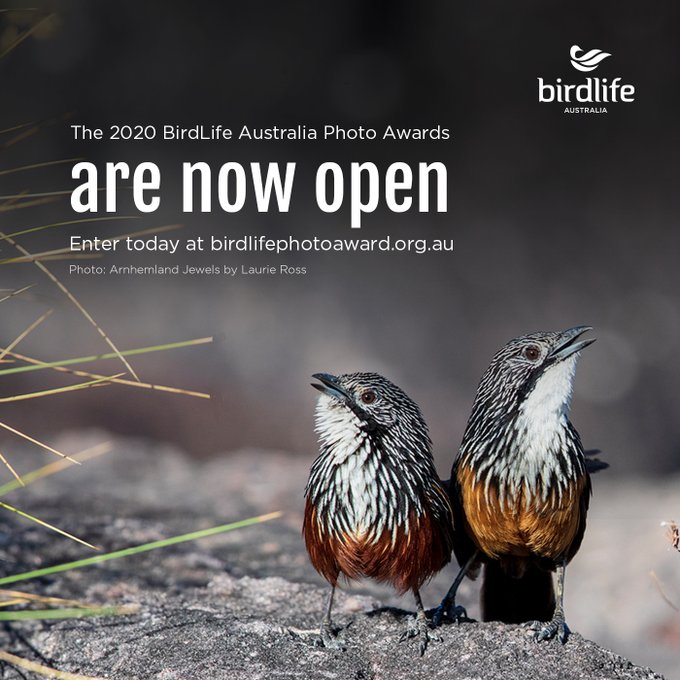
National Volunteer Week With Maureen Worth Of North Narrabeen SLSC
Paolo Zanarelli Plays In His Piano In Many A Strange Place
New Research Shows Australian Seniors Care
- Of 4,139 participants aged 50+ in the survey, 22% were providing care to partners, parents and adult children
- They did this, unpaid, out of love
- They spent an average of 26 hours a week caring and some were full-time, 7-days a week
- Over half of these unpaid carers provided high to medium levels of care
- Most did not have care plans nor had they accessed government support
- They had more health problems than others who were not providing care, and
- More practical, psychological and informational support is needed to maintain this essential workforce.
Curious Kids: What Makes The Wind?
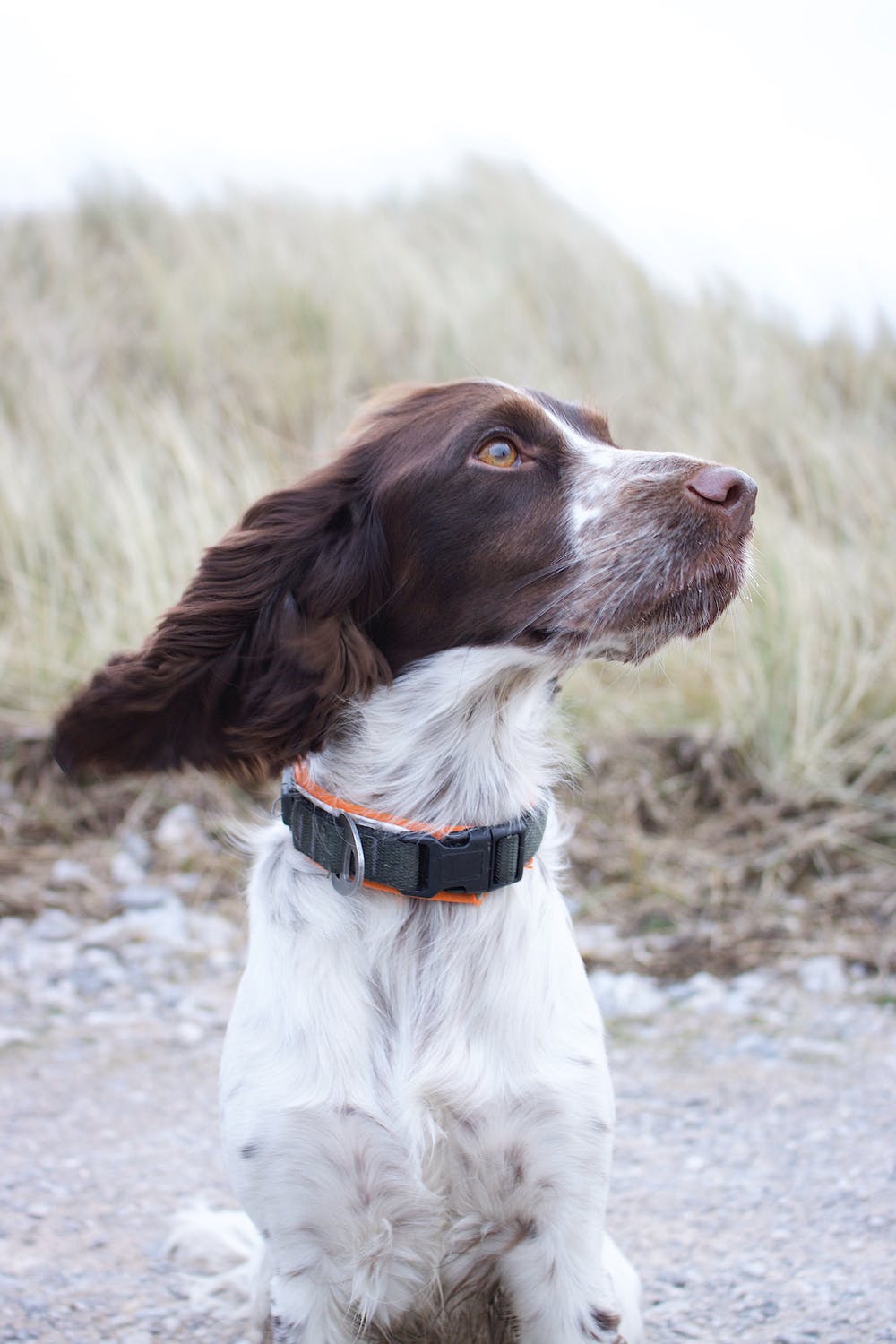 Wind has been whirling around the world since long before we’ve been here to notice it. It howls outside your window, toppling trees and stirring up storms that could snatch your hat right off of your head and send it flying through the air.
Wind has been whirling around the world since long before we’ve been here to notice it. It howls outside your window, toppling trees and stirring up storms that could snatch your hat right off of your head and send it flying through the air.Armchair Antarctic 4: Penguin Personalities
Wallaby Colony Survives In Kangaroo Valley
May 17, 2020
The entire colony of brush-tailed rock-wallabies in Kangaroo Valley survived the 2019-20 bushfires which devastated the region, with the support of emergency food drops, announced Environment Minister Matt Kean today.
The life-saving food included carrots and sweet potatoes, as part of the Saving our Species (SoS) program to help this significant colony of a native species.
“After the ferocious fires, it was a welcome relief to hear monitoring cameras and the GPS collars confirmed all the wallabies survived the blaze after trapping several wallabies to assess their health and remove GPS tracking collars,” Mr Kean said.
“It was great to hear the wallabies were in good health, with one wallaby identified as a joey that was not previously known.
“This level of intervention is vital to help maintain these colonies and allow them to recover. At this stage feeding is expected to continue until natural food resources and water become available in the landscape during post fire recovery,” Mr Kean said.
Member for Kiama Gareth Ward welcomed the announcement by Minister Kean.
“I am thrilled to hear rock-wallabies are in good health thanks to the emergency food drops and incredible work by NPWS rangers across our region.”
Thousands of kilograms of carrots and sweet potatoes were delivered to wallabies in the Capertee and Wolgan region, Yengo National Park, Kangaroo Valley, Jenolan and Oxley Wild Rivers National Park, in the immediate aftermath of the bushfires helping to ensure the survival of the endangered iconic species.
The NSW Government’s Saving our Species program aims to secure the future of threatened plants and animals, such as the brush-tailed rock-wallaby in the wild.
An Avalon Beach Seagull With Some Nice Messages
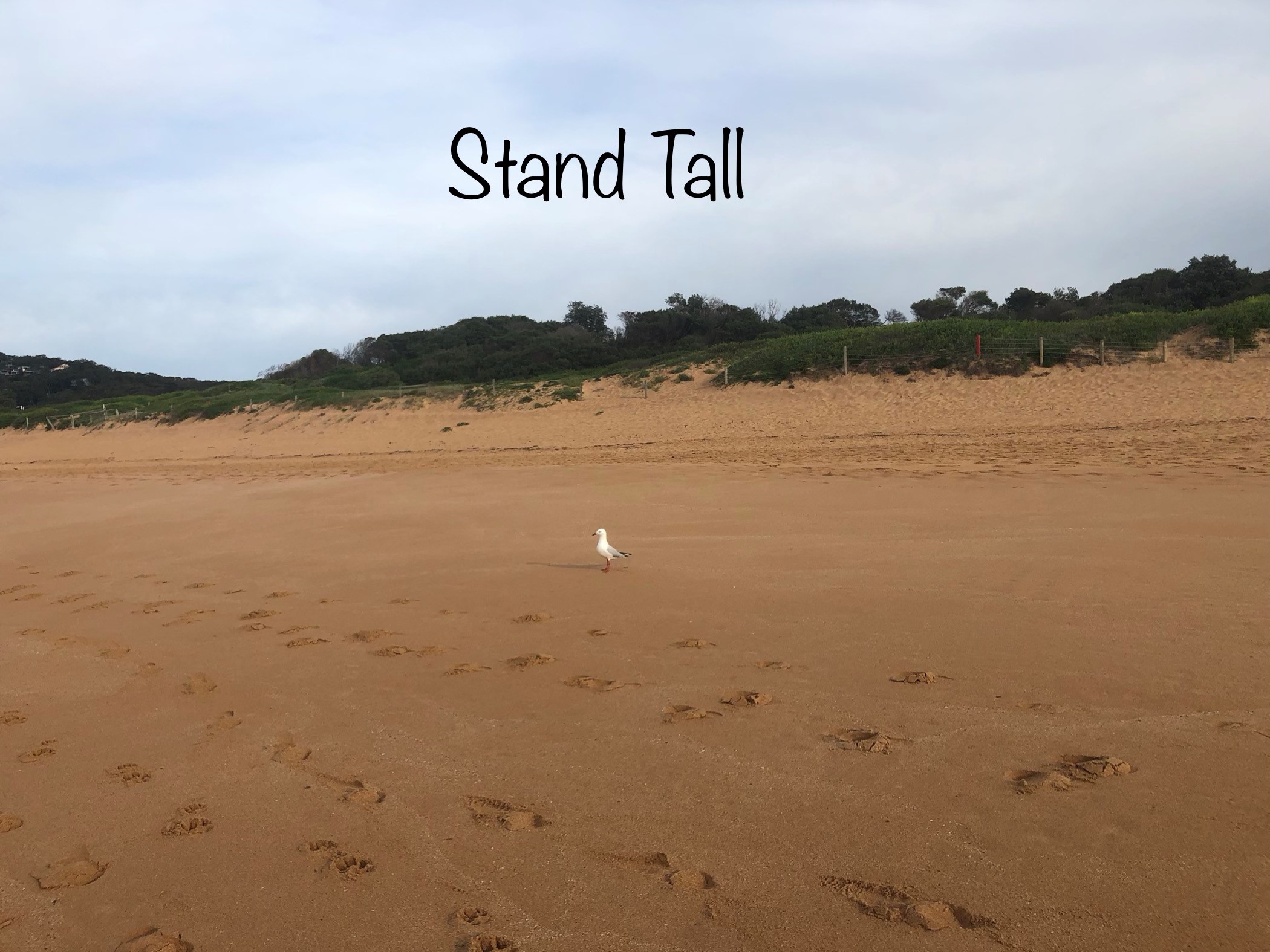
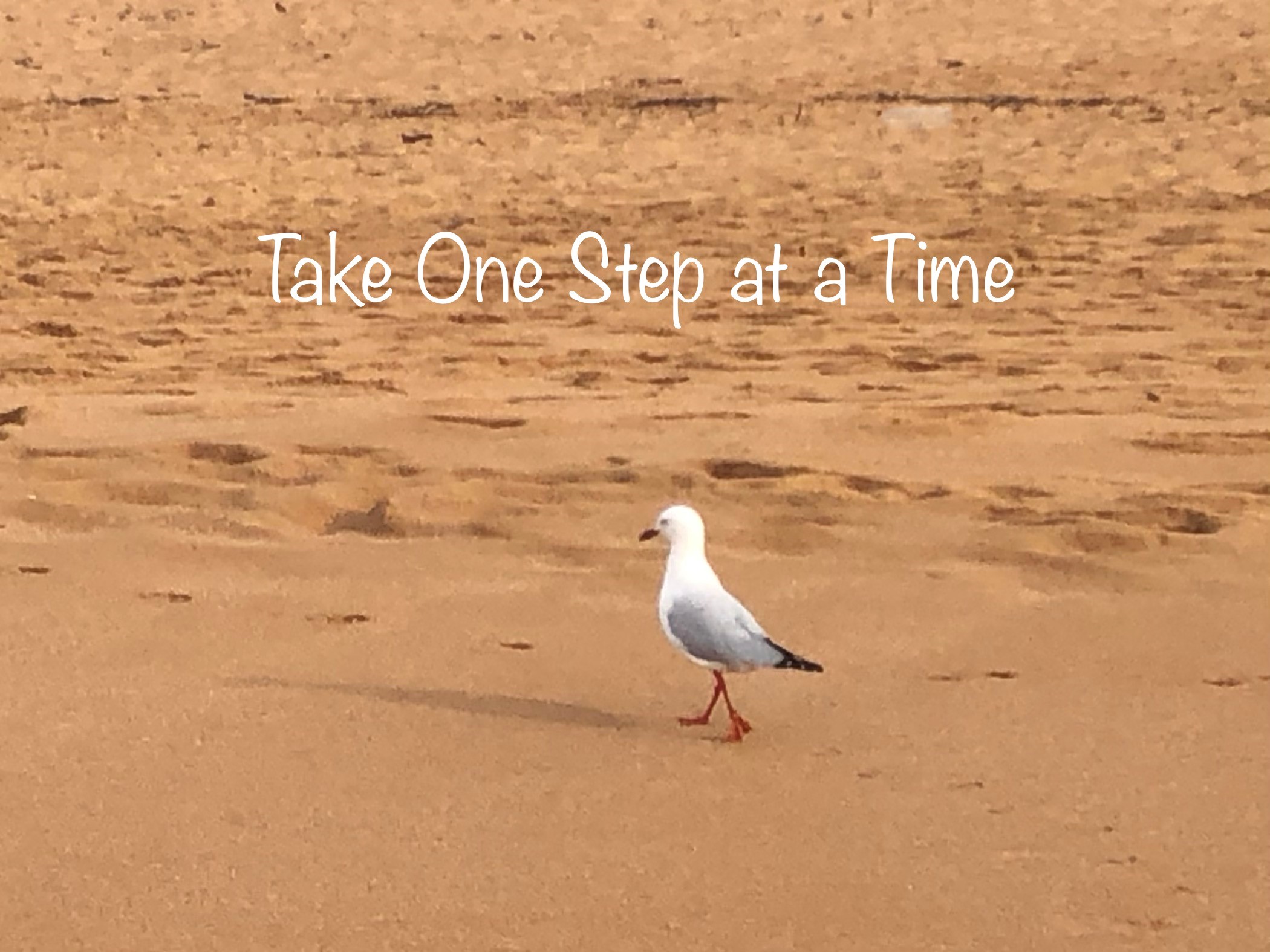
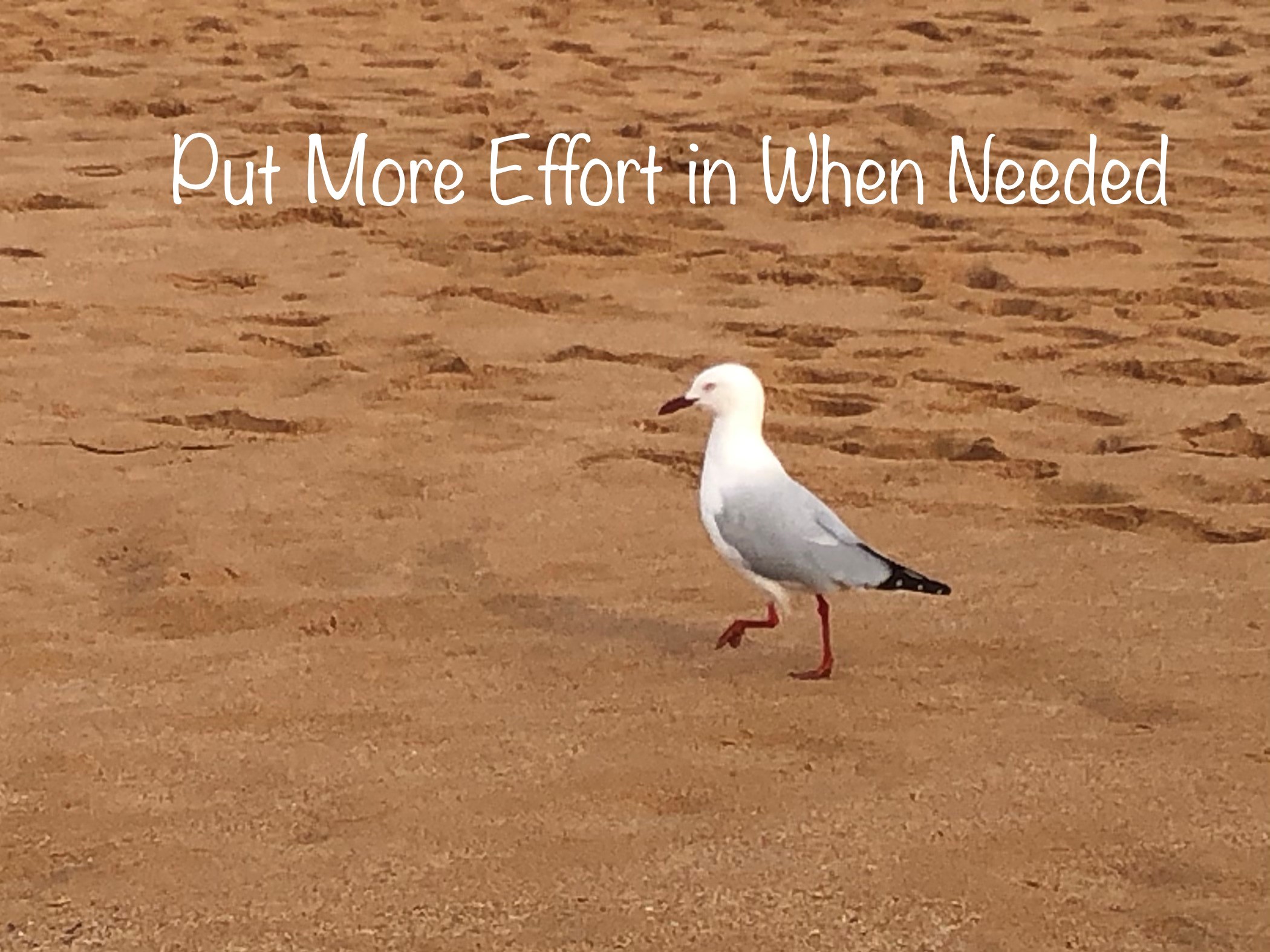
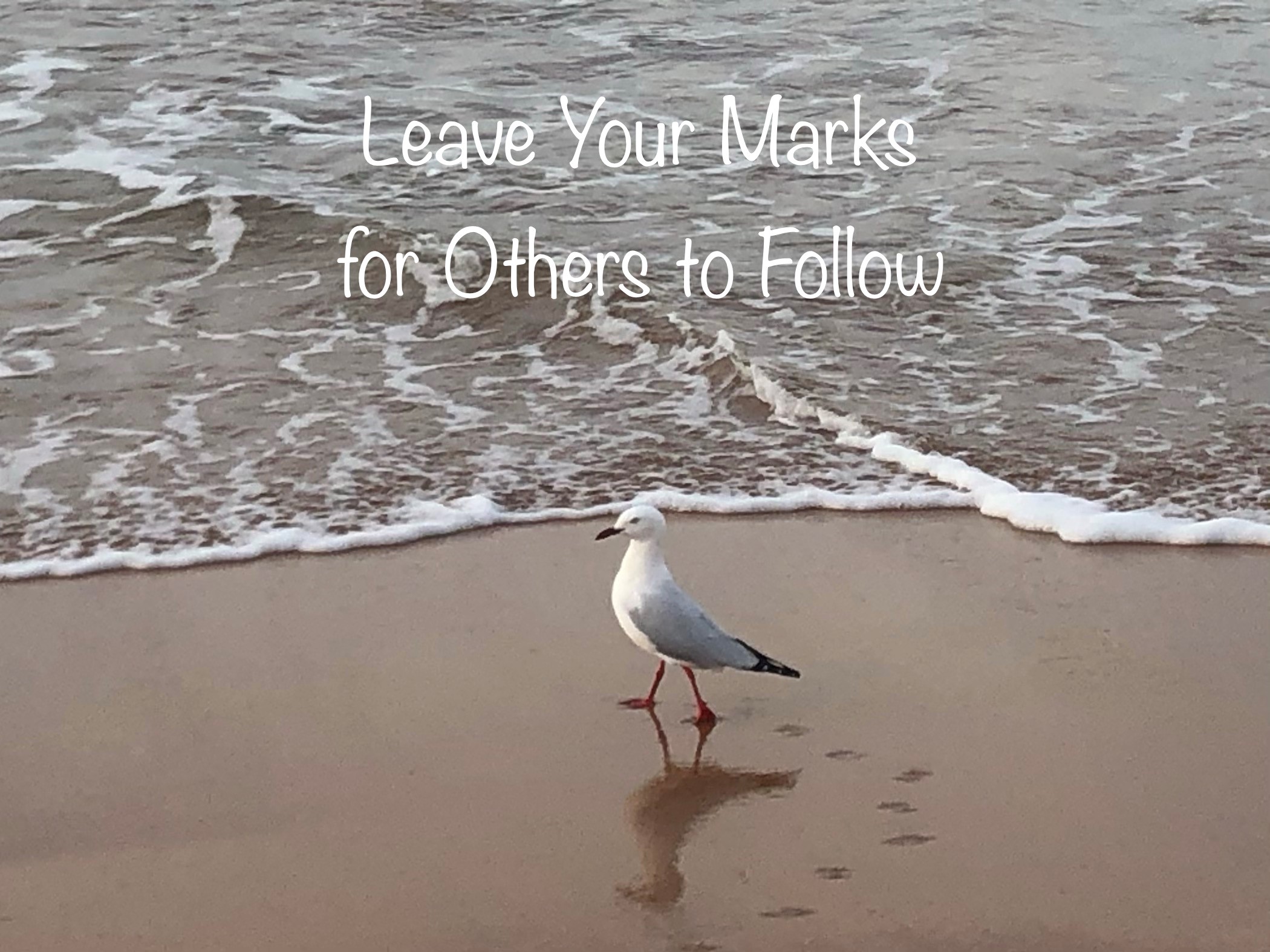
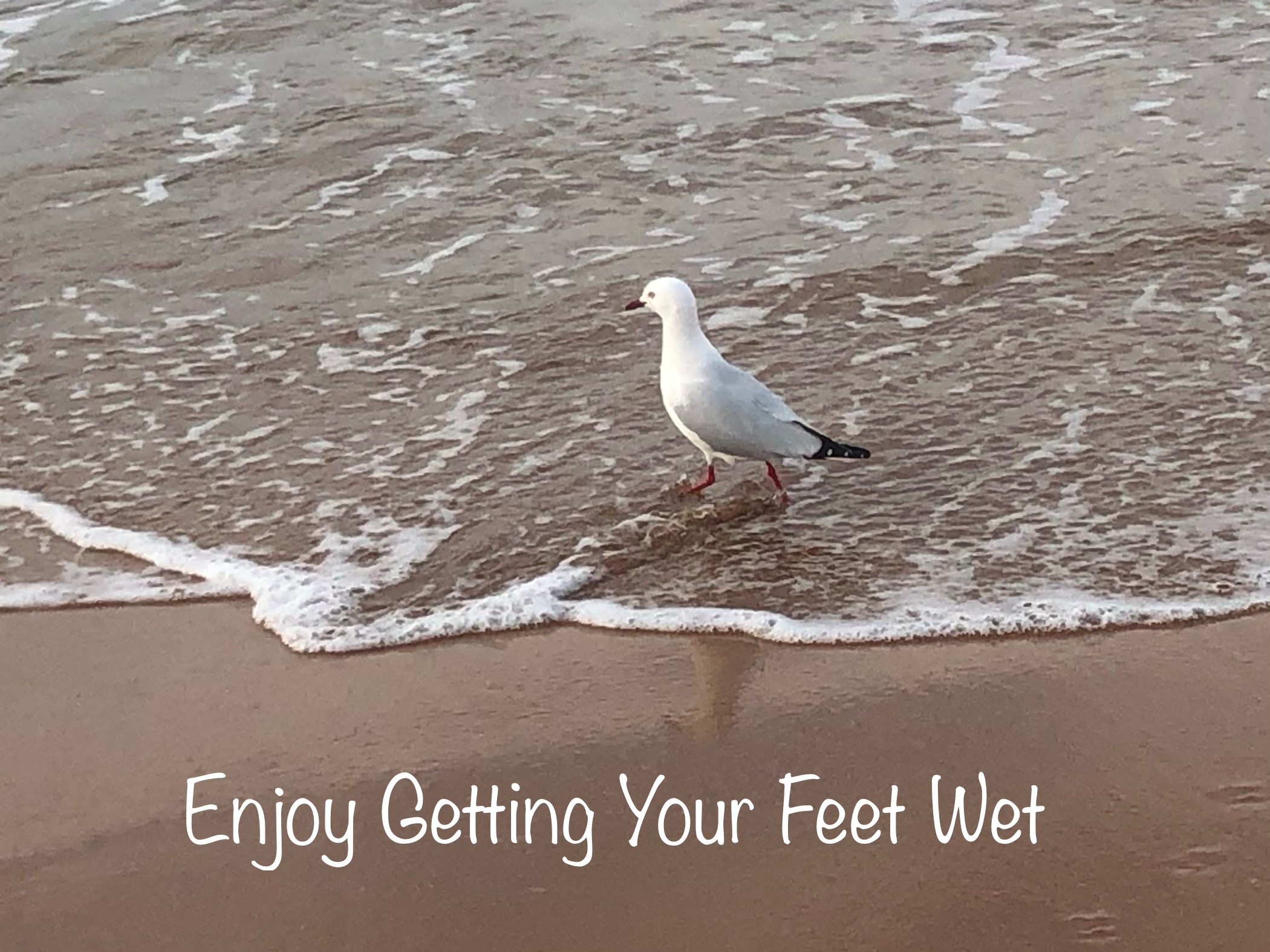
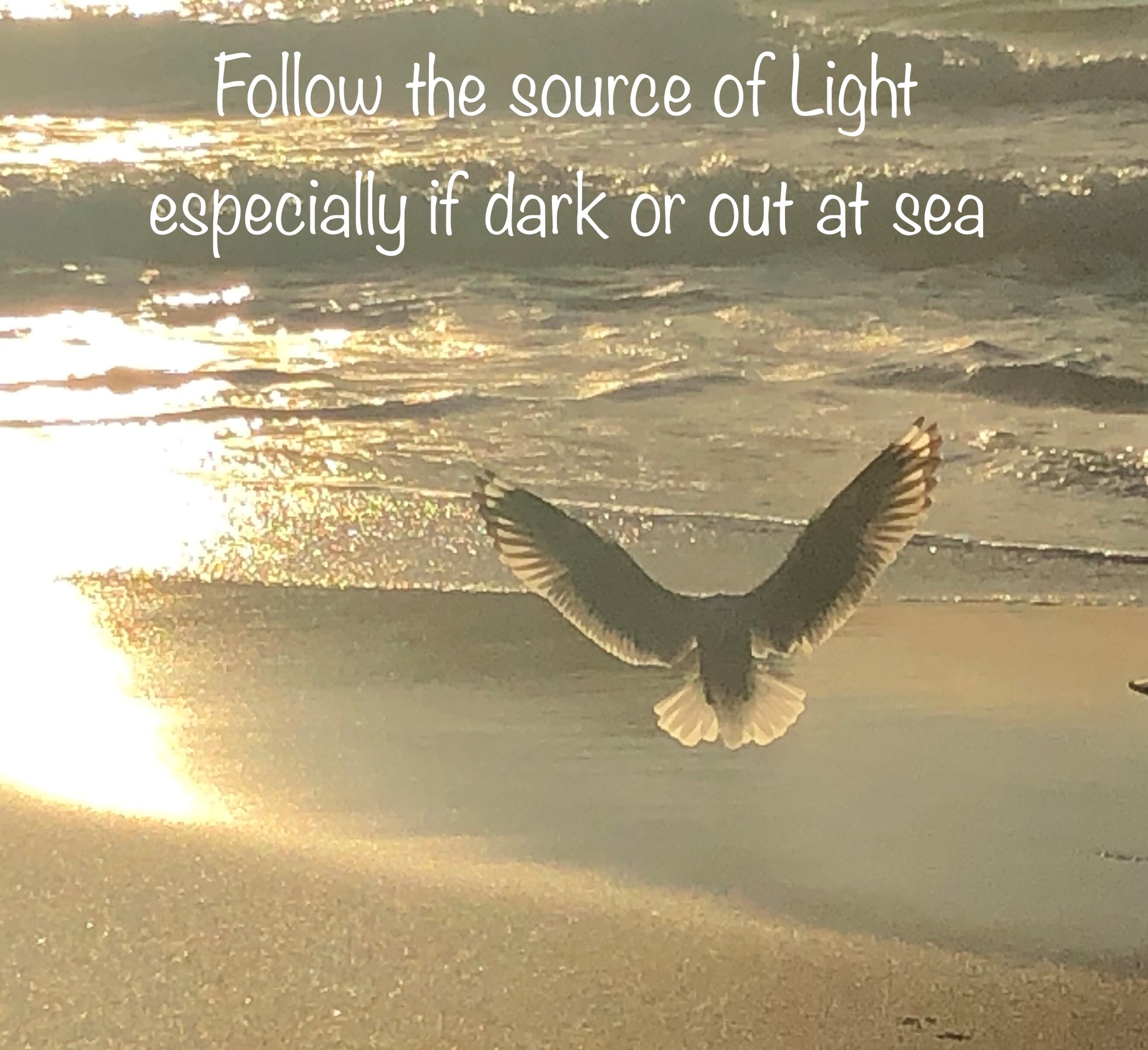
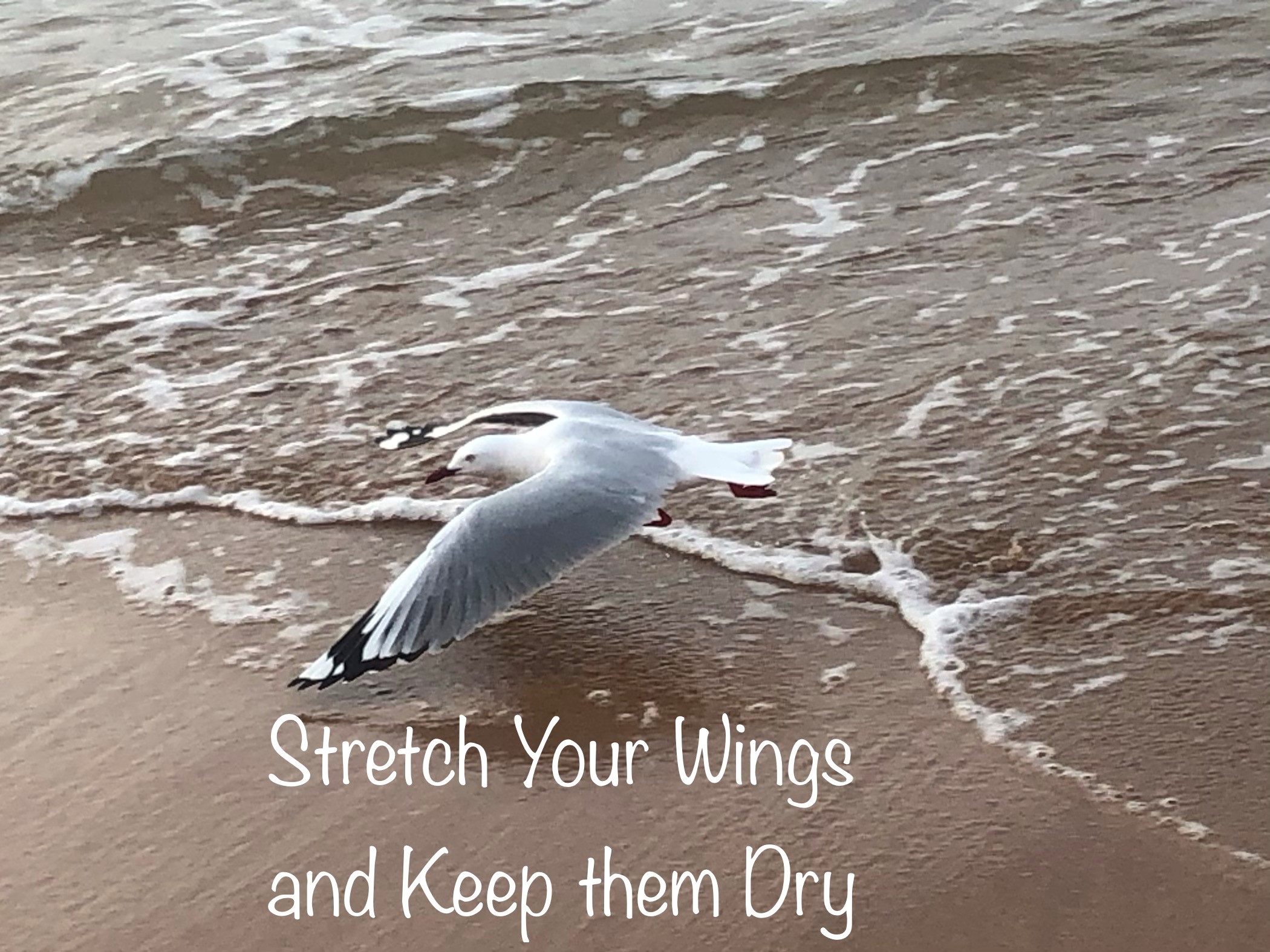
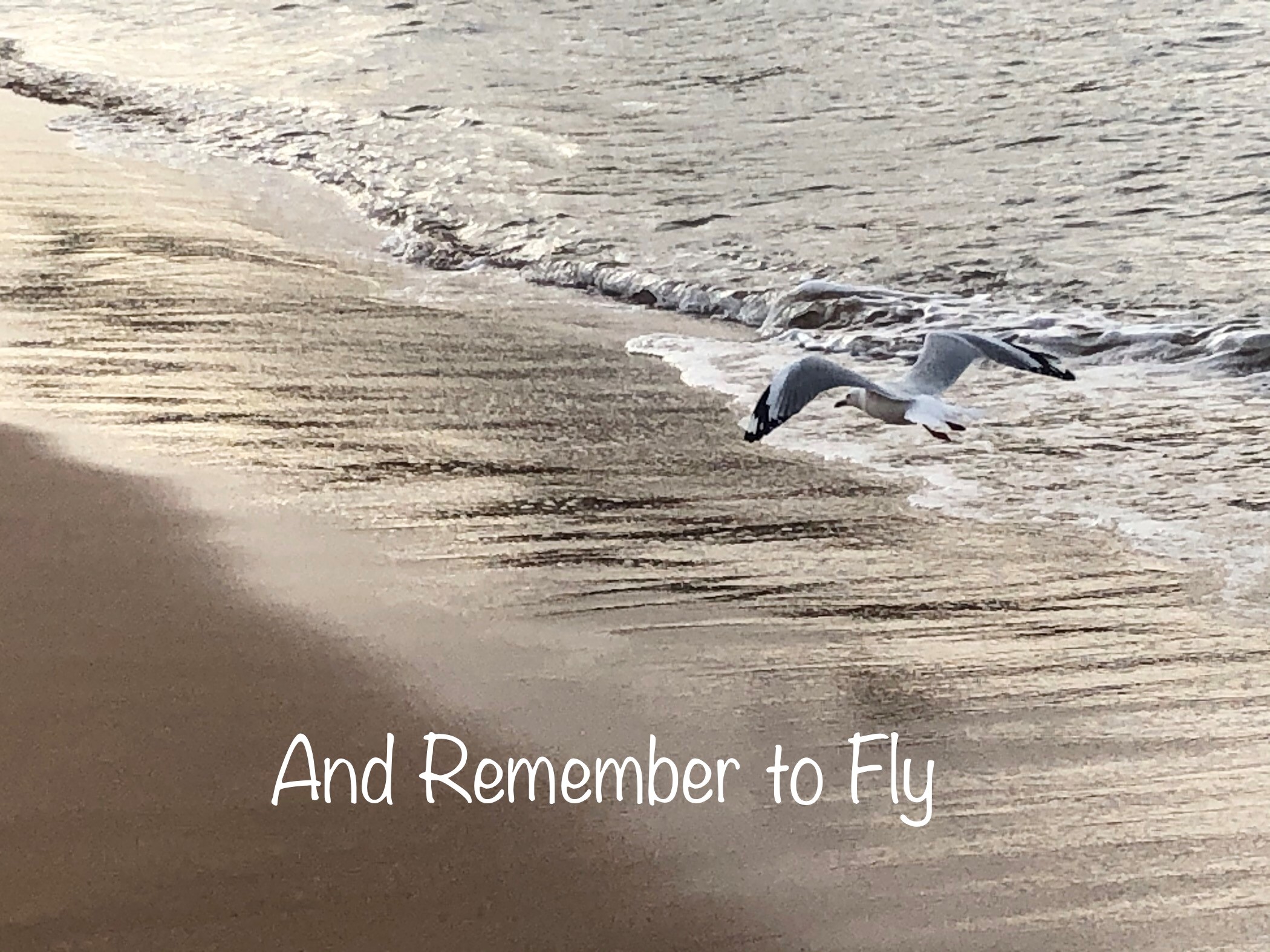
The Secret Life Of Superb Fairy-Wrens – Featuring Special Scenes From The Nest
Letters To Capture Historic Period In Time
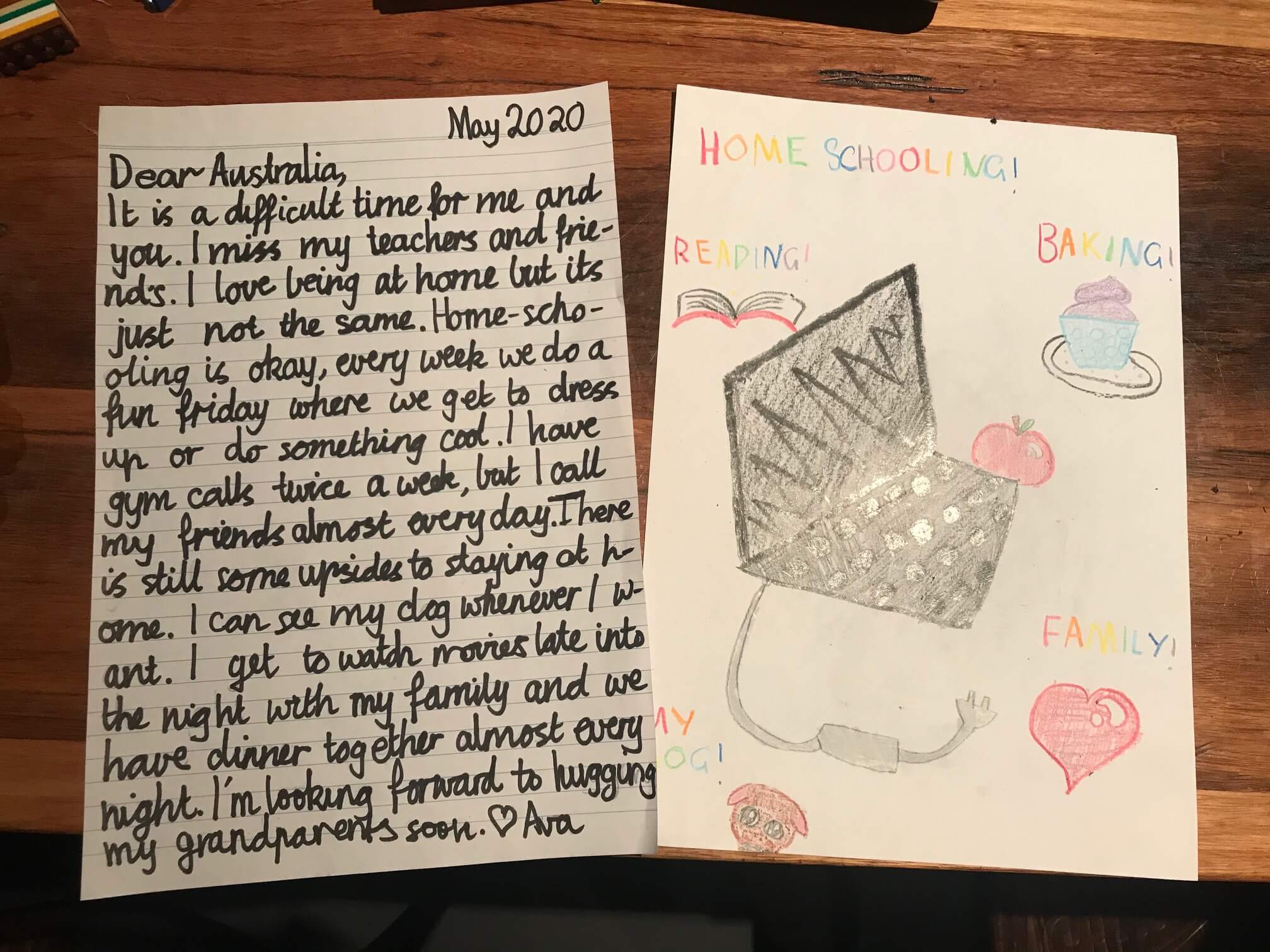
The 2020 Australian Surfing Awards Incorporating The Hall Of Fame Airs This Sunday, May 24th

Delta Goodrem - 'Keep Climbing' | #TogetherInArt Performance
How To Make A Collage Portrait With Deborah Kelly
Young Writers' Competition 2020
Splash through puddles, hear a suspicious splash or have your face splashed across the news... How will you make a splash?
The Northern Beaches Young Writers' Competition 2020 is now open!
Write an original story using this year's theme word 'splash' for a chance to be published as an author in a library eBook.
The competition is open to students up to and including year 12 who live or go to school on the Northern Beaches and are members of the Northern Beaches library service.
How to enter:
Complete the online entry form and attach your story as a Word document. If your story is hand-written, then a clear, readable photo or scanned PDF can be submitted. All entries must be submitted by 8pm, Wednesday 10 June.
Not a member of the library? Don't worry, we will use this form to create a membership for you. Just mark 'no' under the library member field in the online form. If you are a member and unsure of your library card number, just mark 'yes' in the library member field in the online form and we will find your library membership number.
About the competition:
Entries will be judged according to characterisation, originality, plot and use of language and will be arranged into six different age group categories.
Winners from each category will have their stories published in an eBook that will be added to our collection.
For more information, please email our Library Programs team or call 9976 1739.
Want some inspiration? Check out the 2019 Young Writers' Competition winning entries in the eBook Wild.
.JPG.opt958x751o0,0s958x751.jpg?timestamp=1588283649436)
Maintaining Heart Health May Protect Against Cognitive Decline
ESafety Courses To Keep Senior Australians Connected During COVID-19
- Video chatting with family, friends and health professionals;
- Ordering groceries and other shopping essentials online for home delivery;
- Carrying out everyday tasks online, including accessing essential services; and
- Accessing Federal Government information updates from australia.gov.au and the Coronavirus Australia app
High Five! It's Possible To Create Proximity Online
Managing Mental Health With Yoga: Review Shows Moving Your Body Helps
Why Cats Have More Lives Than Dogs When It Comes To Snakebite
Subcellular Chatter Regulates Longevity
Researchers Go Cuckoo: Antarctic Penguins Release An Extreme Amount Of Laughing Gas
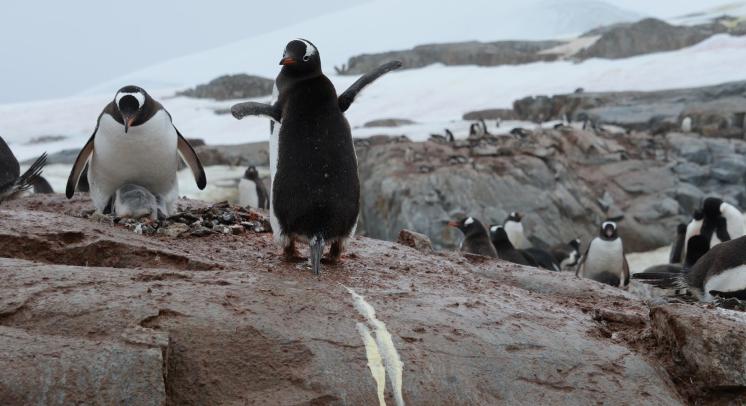
All Pumped Up For New-Age Rubber
Each year in Australia, the equivalent of 48 million tyres reach the end of their life, only 16% of these are domestically recycled. Around two-thirds of used tyres in Australia end up in landfill, are stockpiled, illegally dumped or have an unknown fate.This represents both a waste of resources and creates health and environmental issues. Each passenger car tire contains approximately 1.5kg of steel, 0.5kg of textiles and 7 kg of rubber. -- Source: Planet Ark
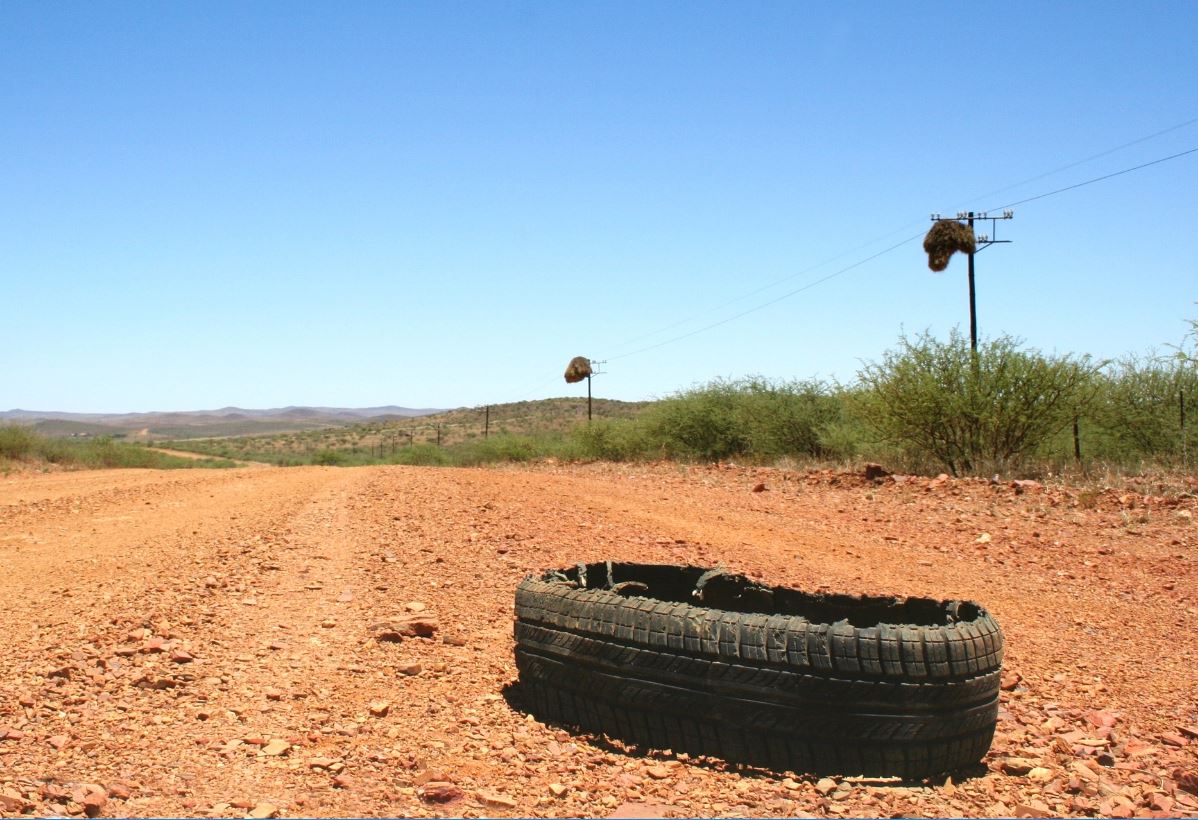
Disclaimer: These articles are not intended to provide medical advice, diagnosis or treatment. Views expressed here do not necessarily reflect those of Pittwater Online News or its staff.